Neural cell isolation from adult macaques for high-throughput analyses and neurosphere cultures
Jia-Ru Wei, Dongchang Xiao, Lei Tang, Nana Xu, Ruifeng Liu, Yuhui Shen, Zihui Xu, Xuan Sang, Jian Ge, Mengqing Xiang, Sheng Liu
Neural cell isolation
Adult macaques
Primary brain cells
Neurosphere cultures
High-throughput analyses
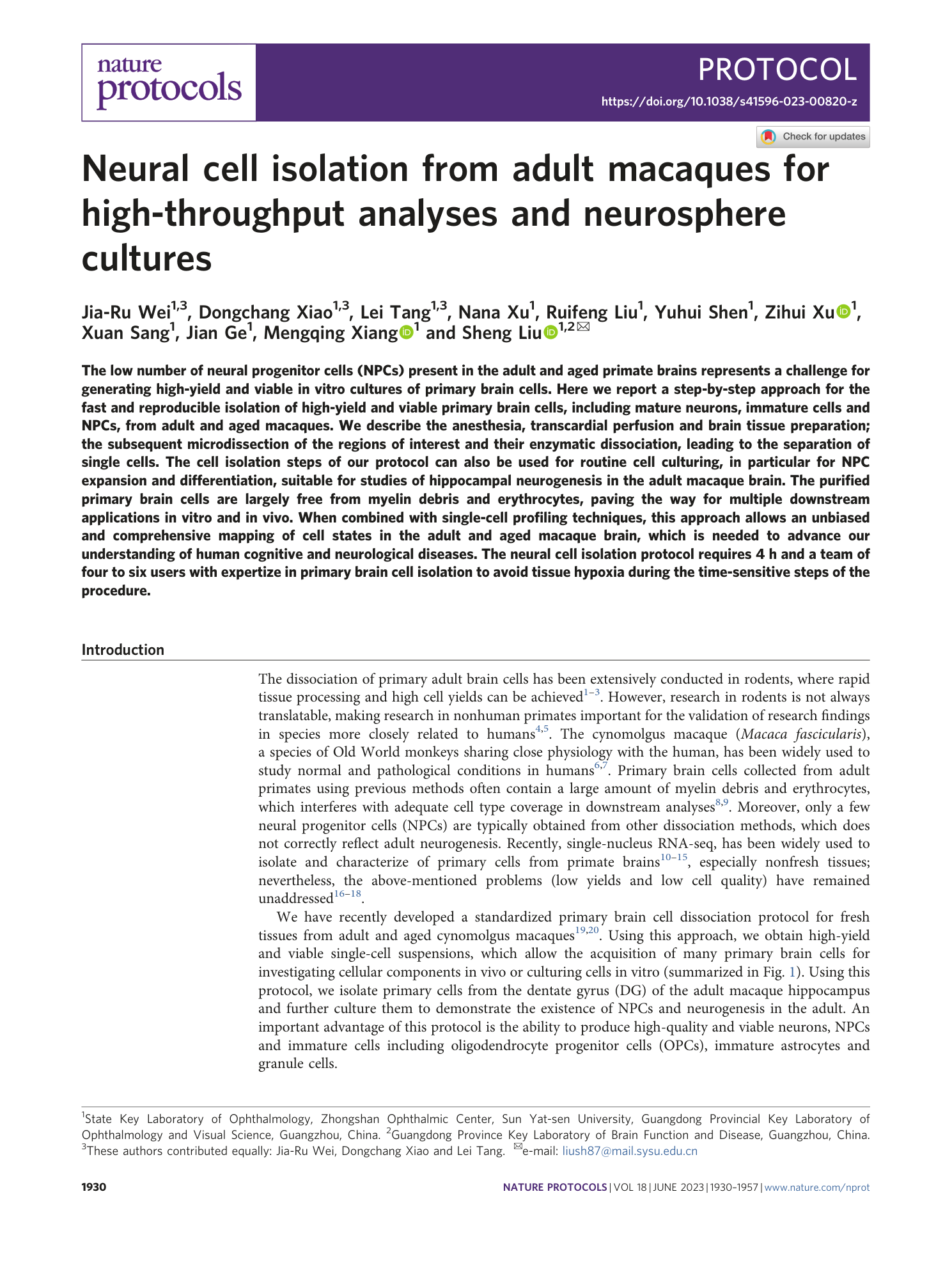
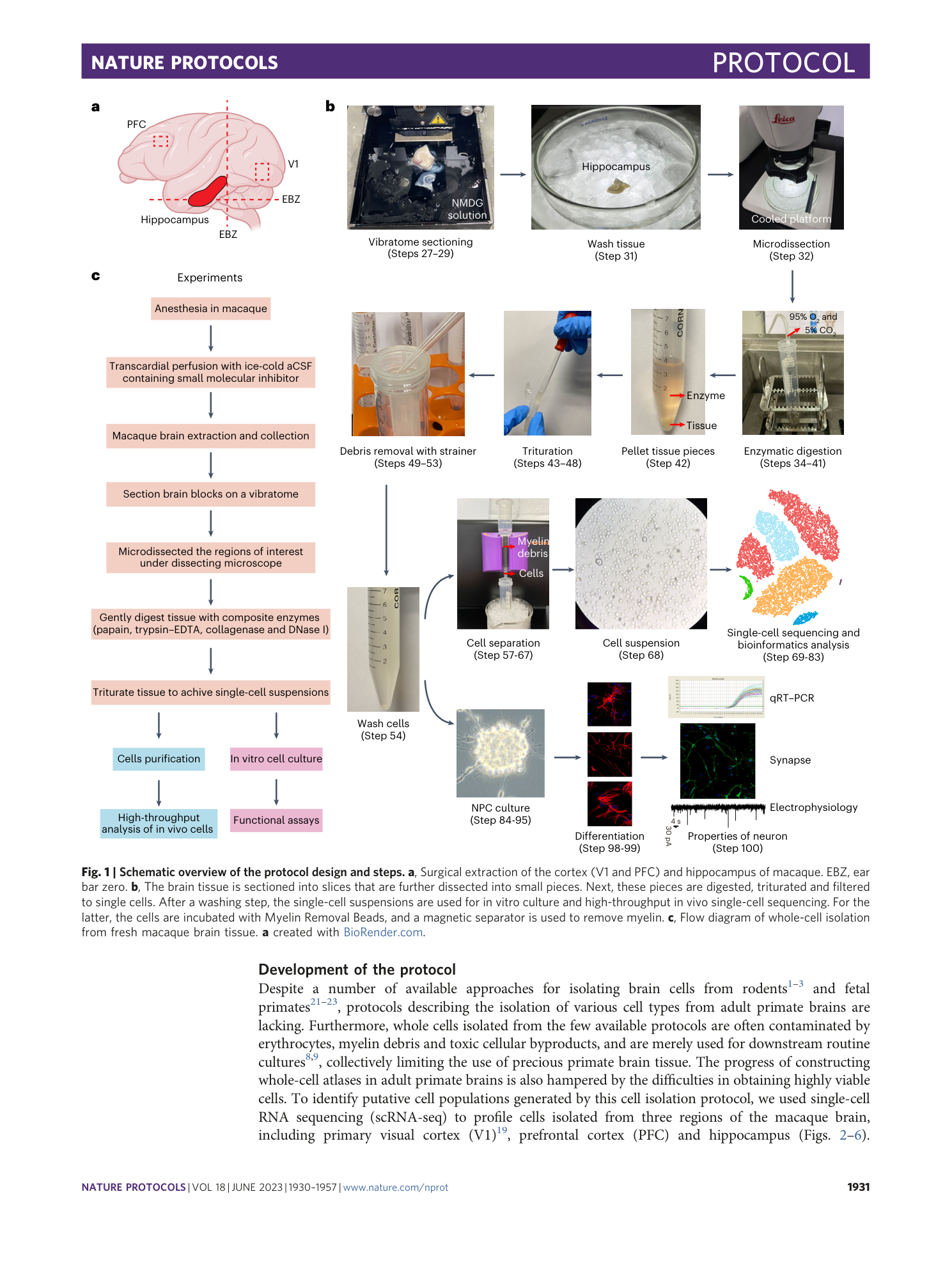
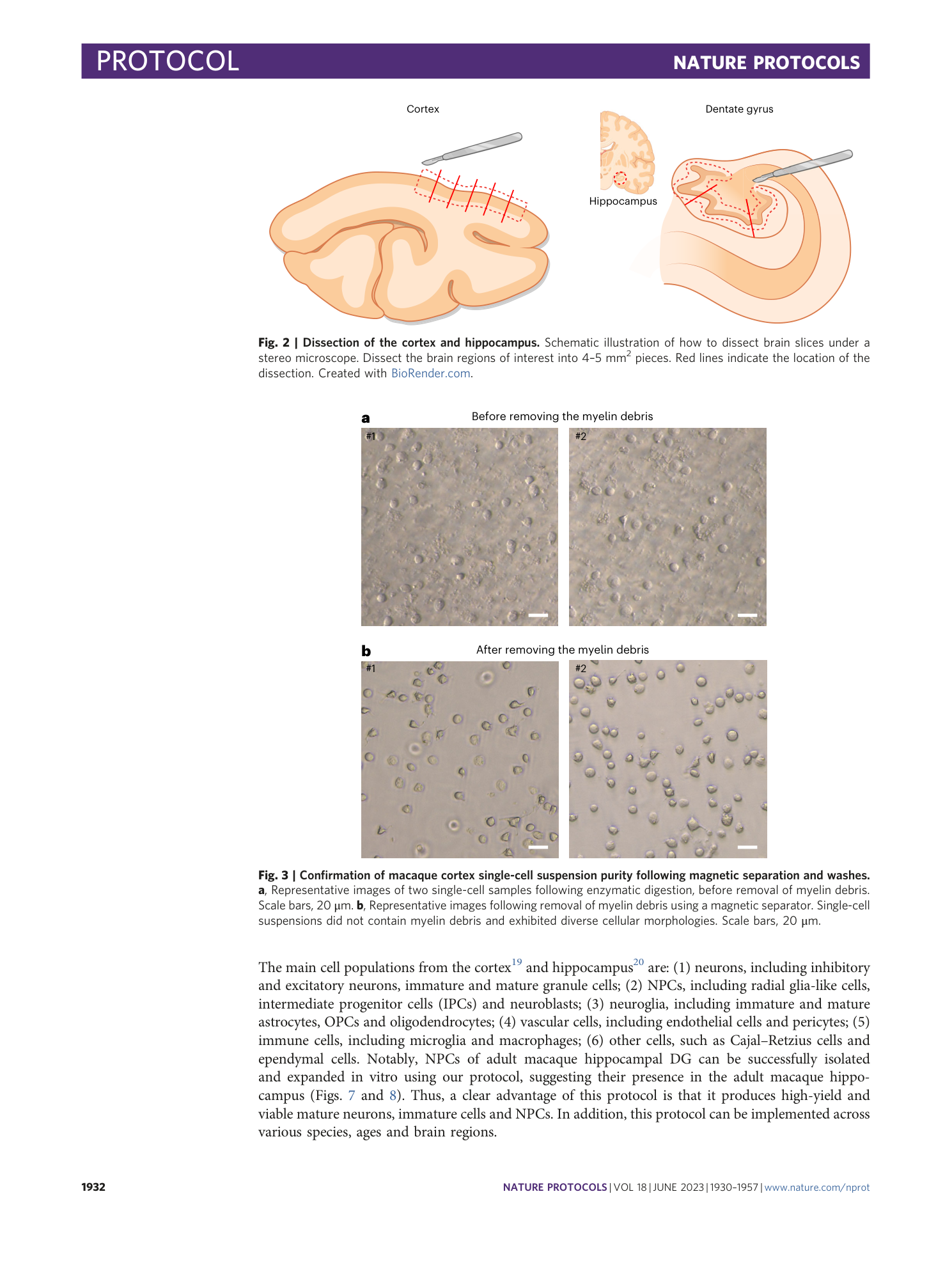
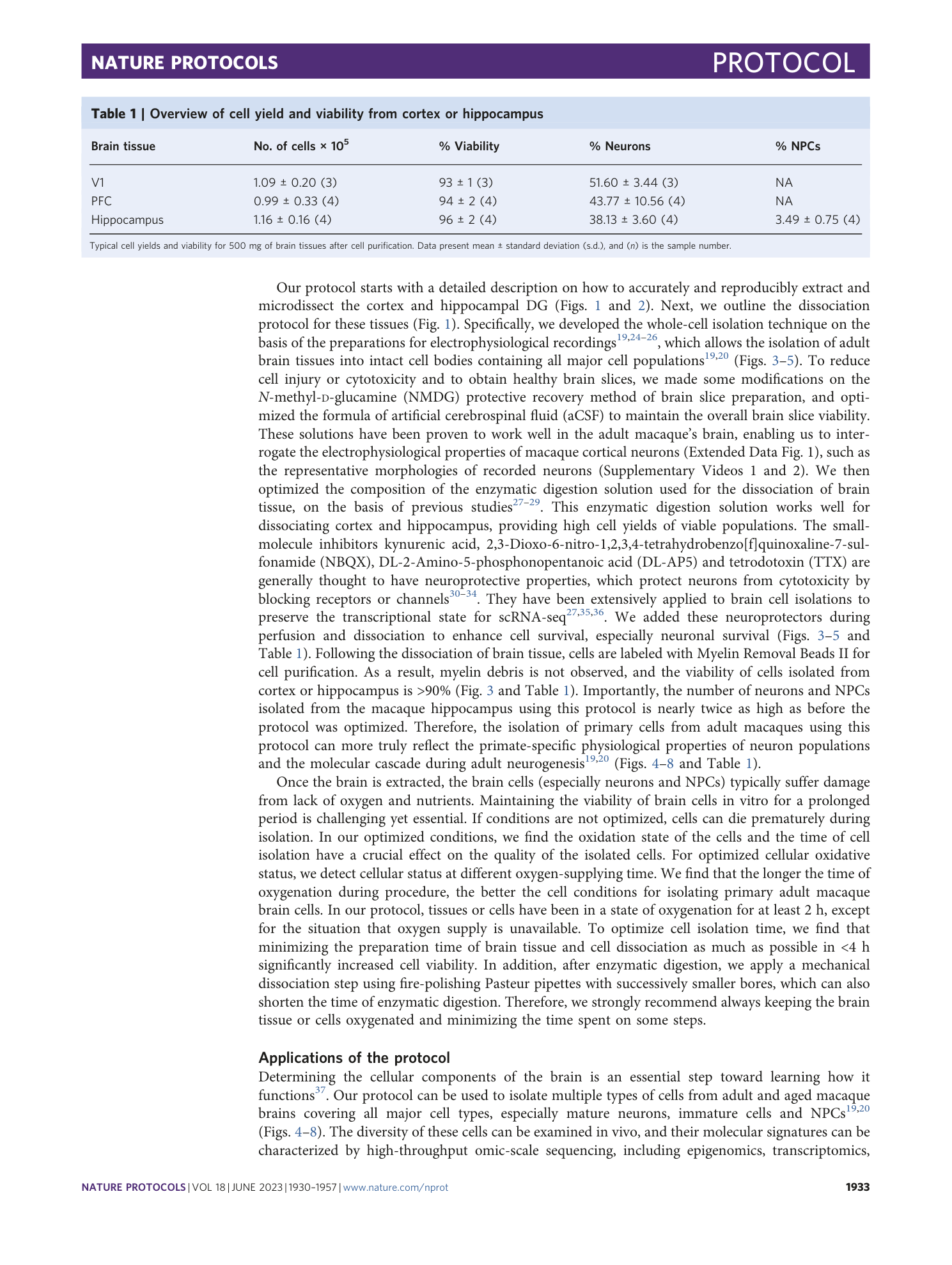
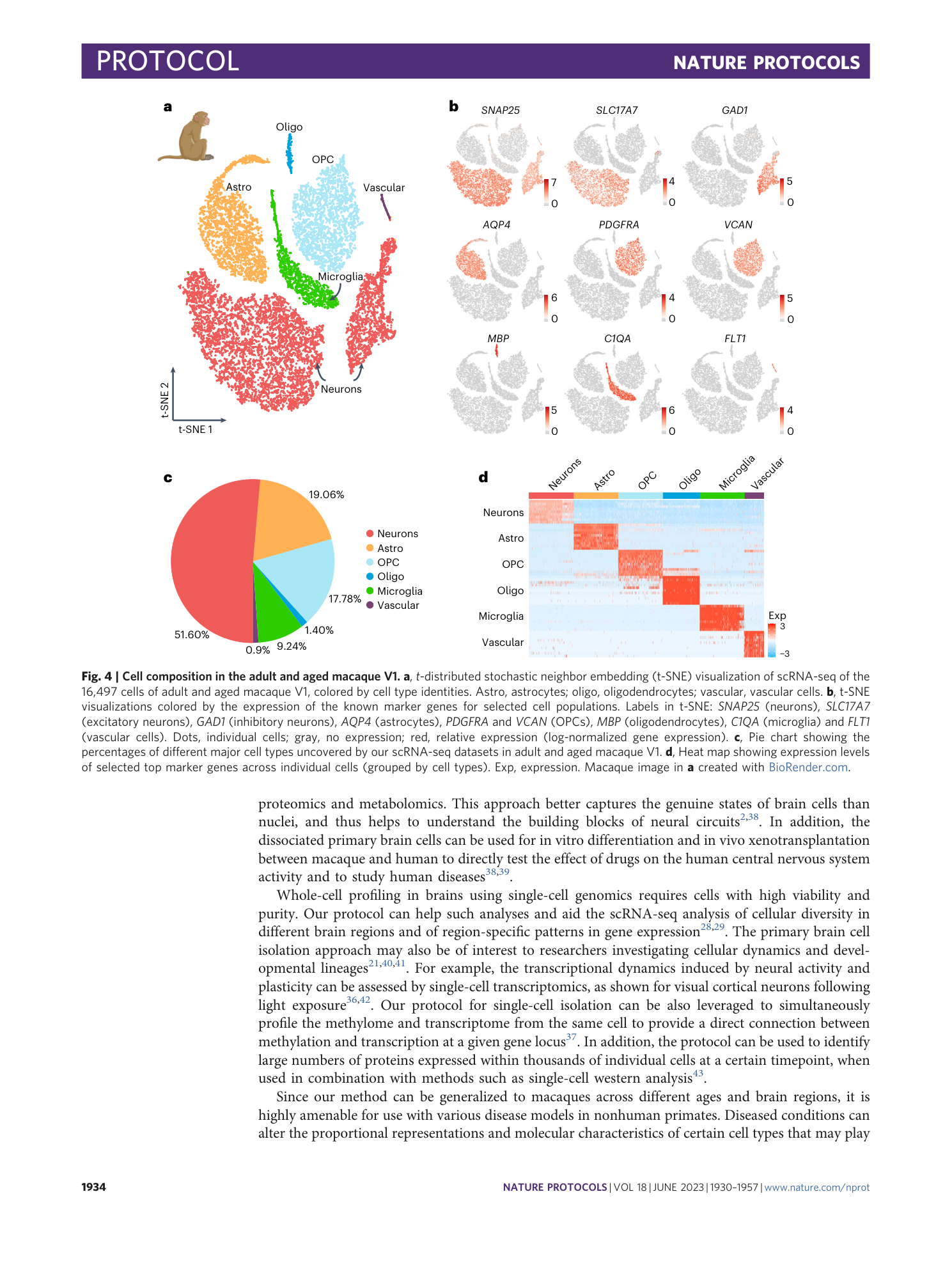

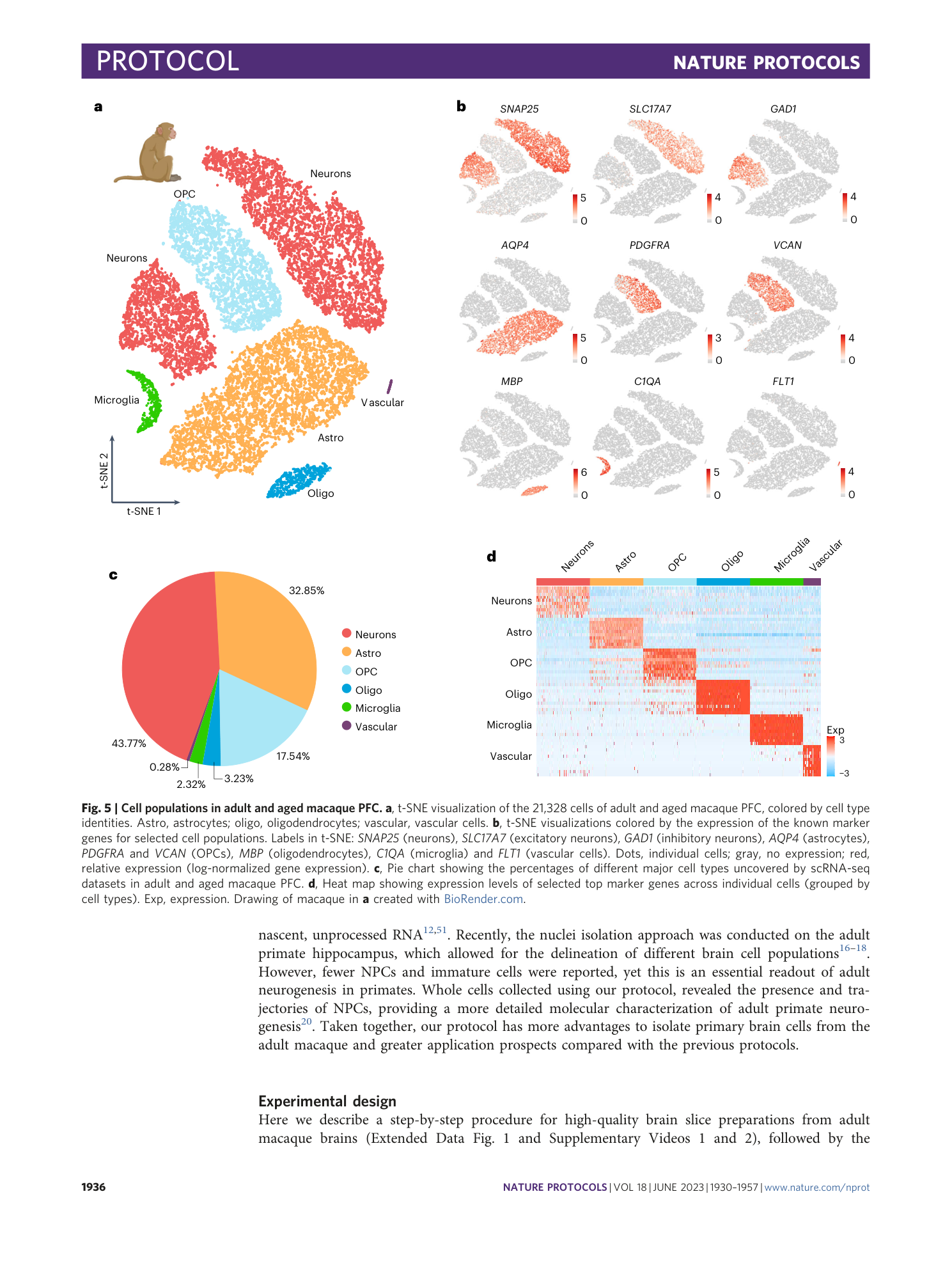
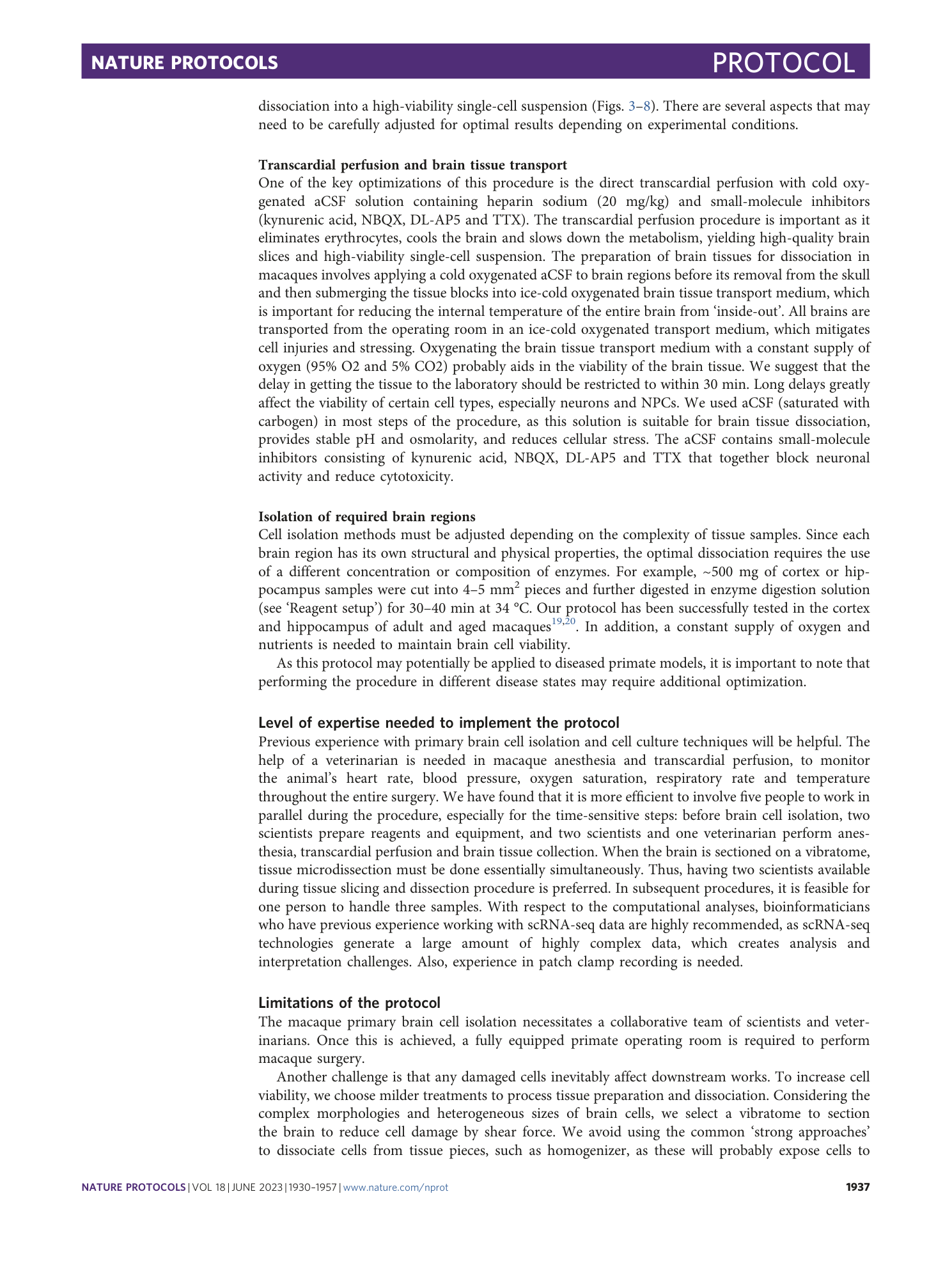
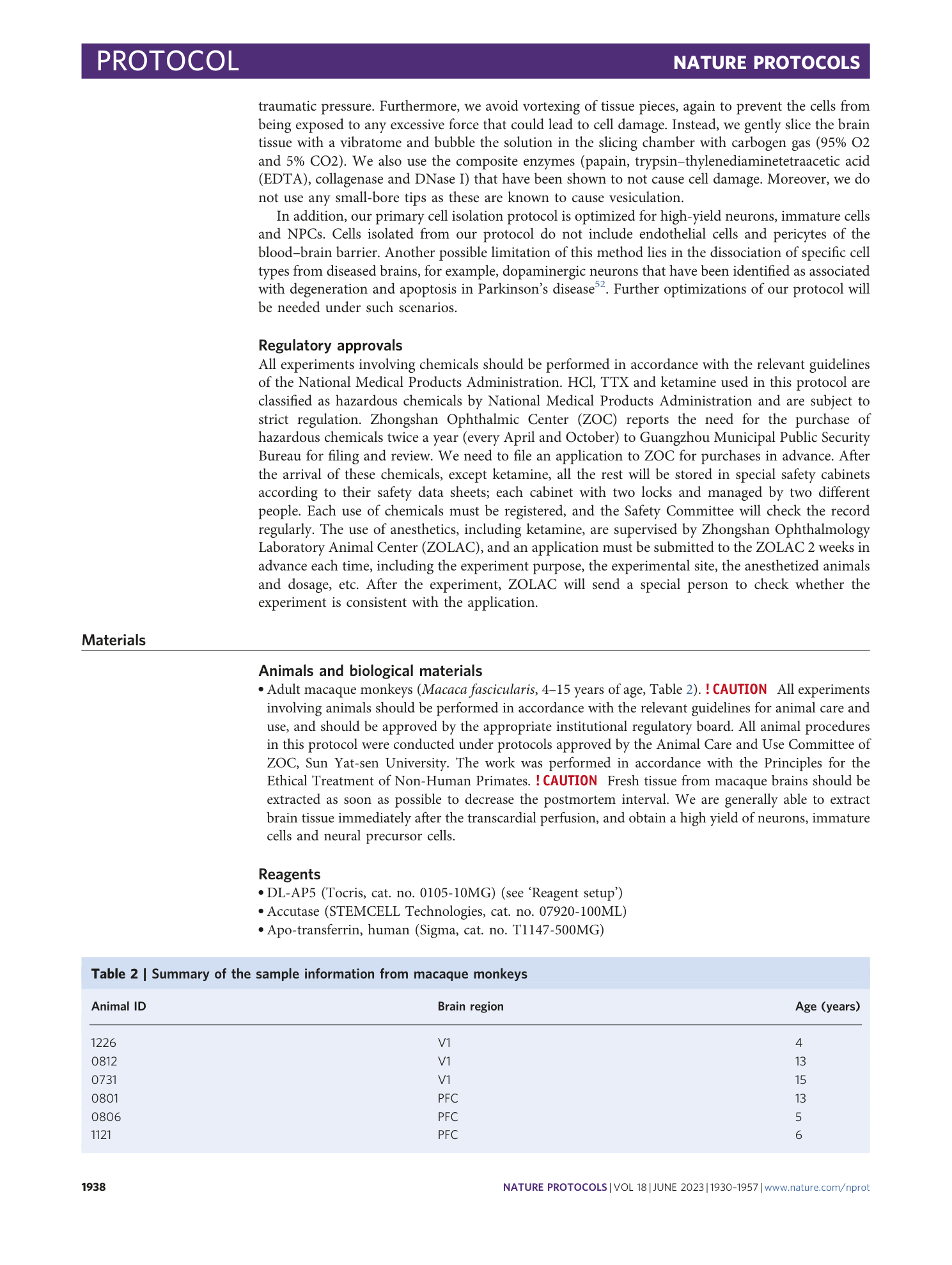
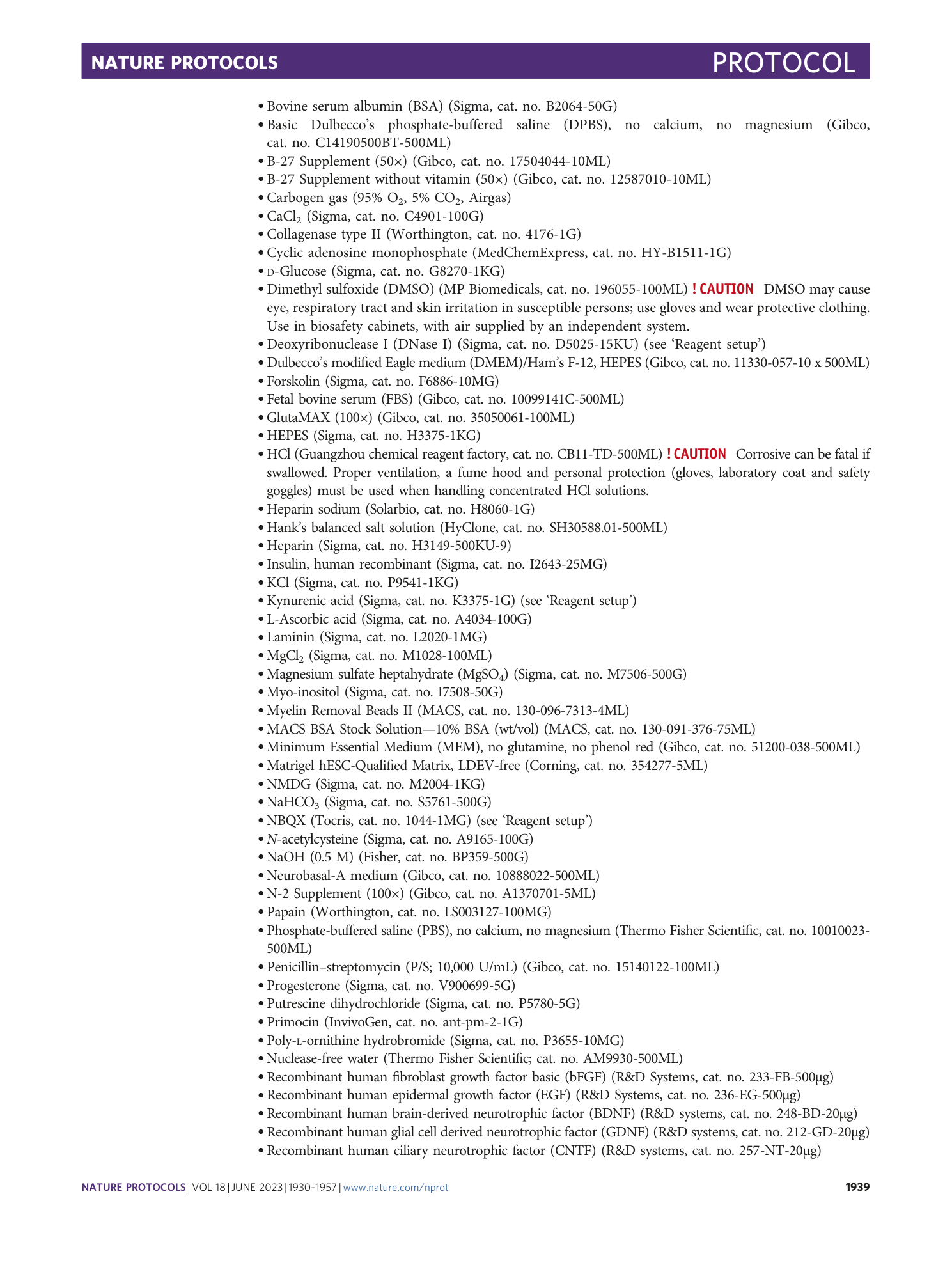

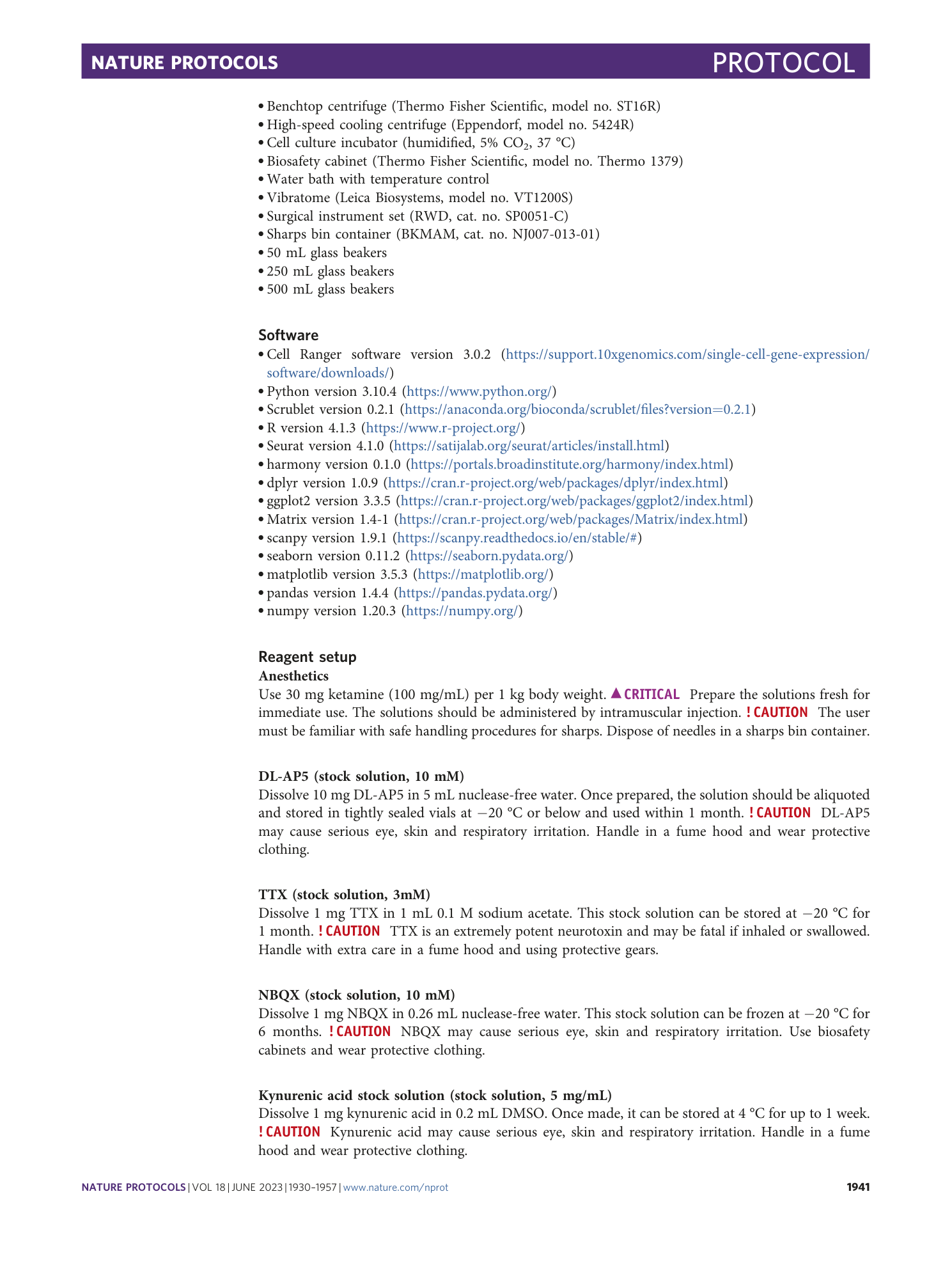
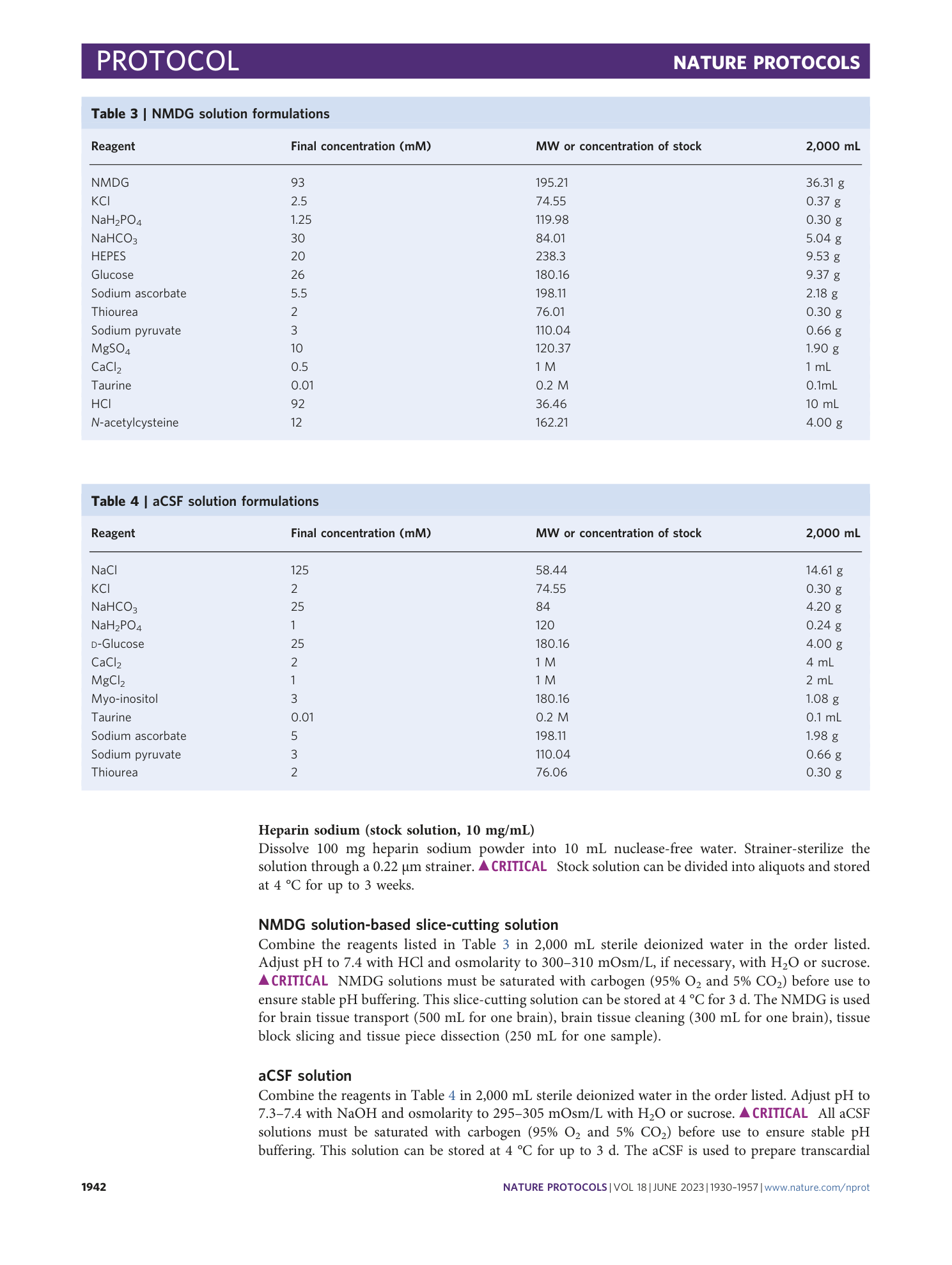

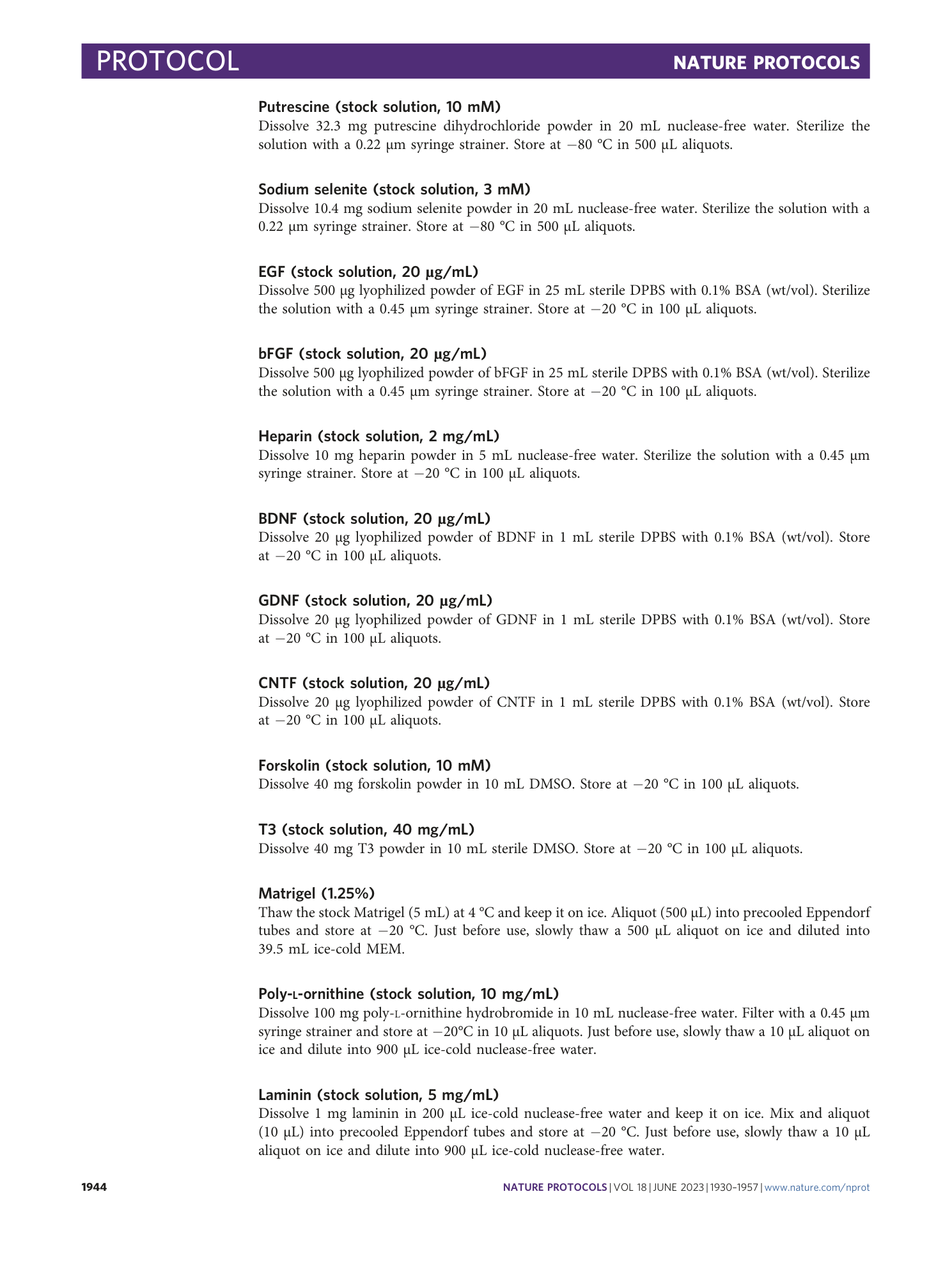

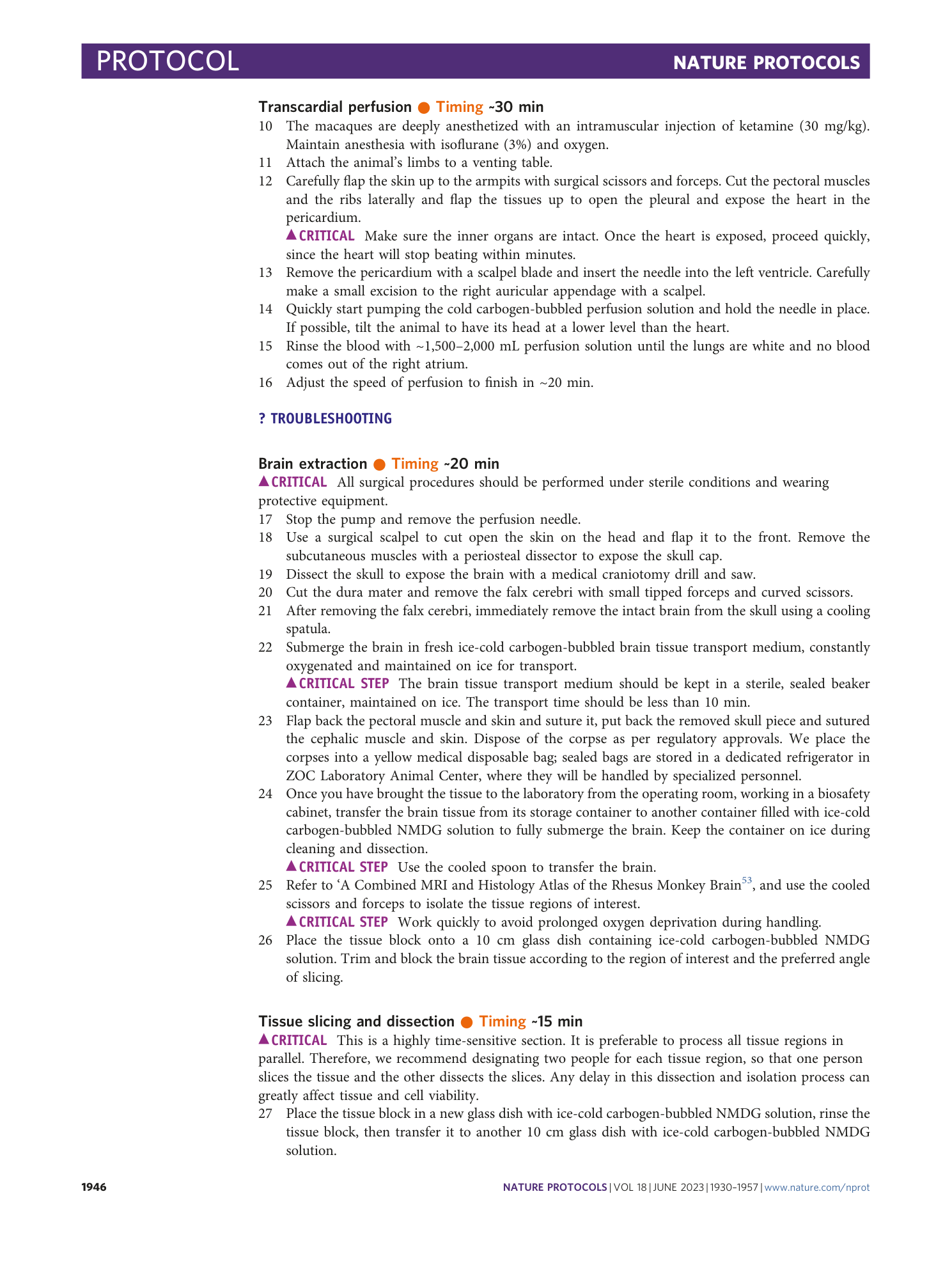
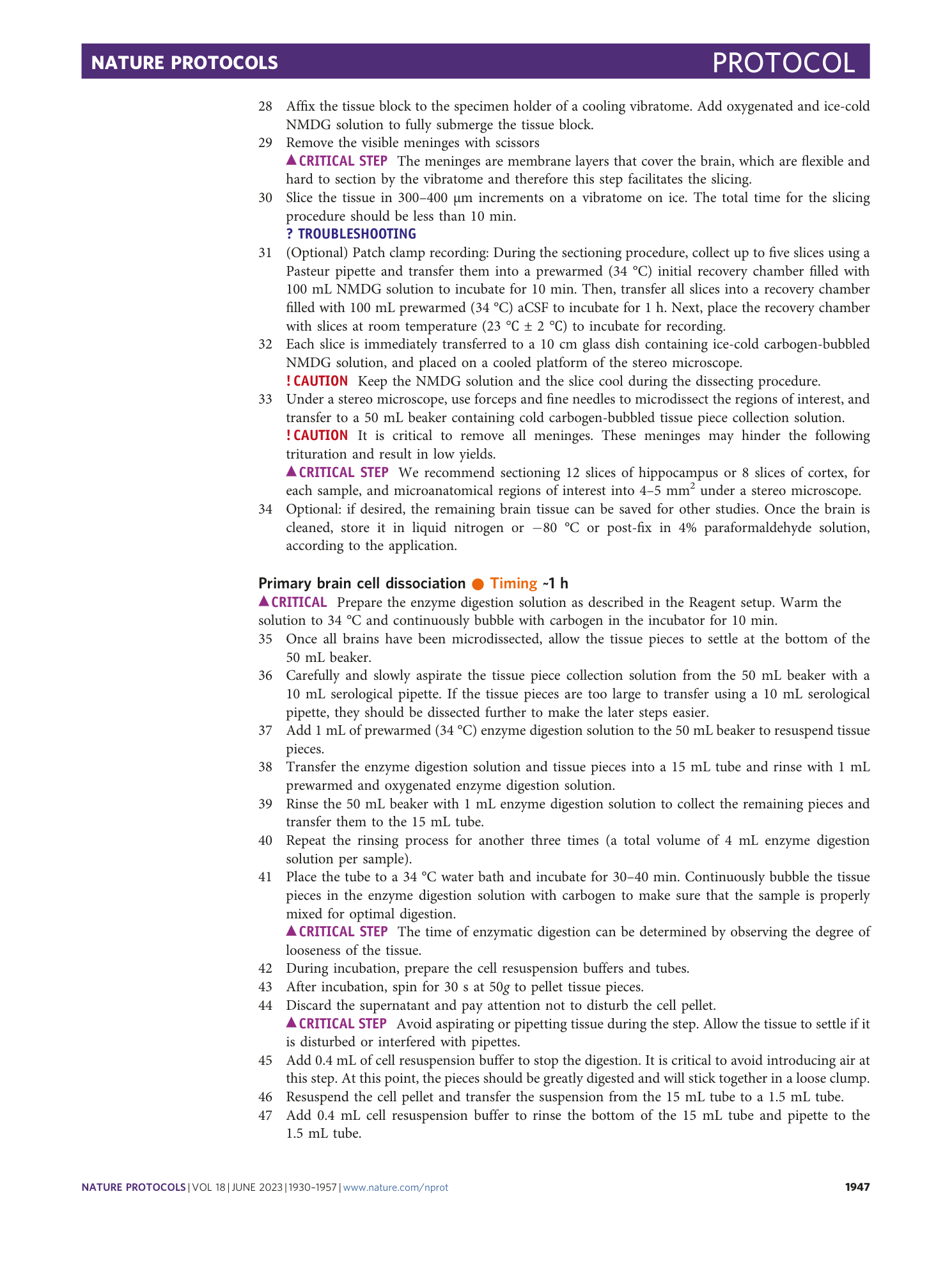
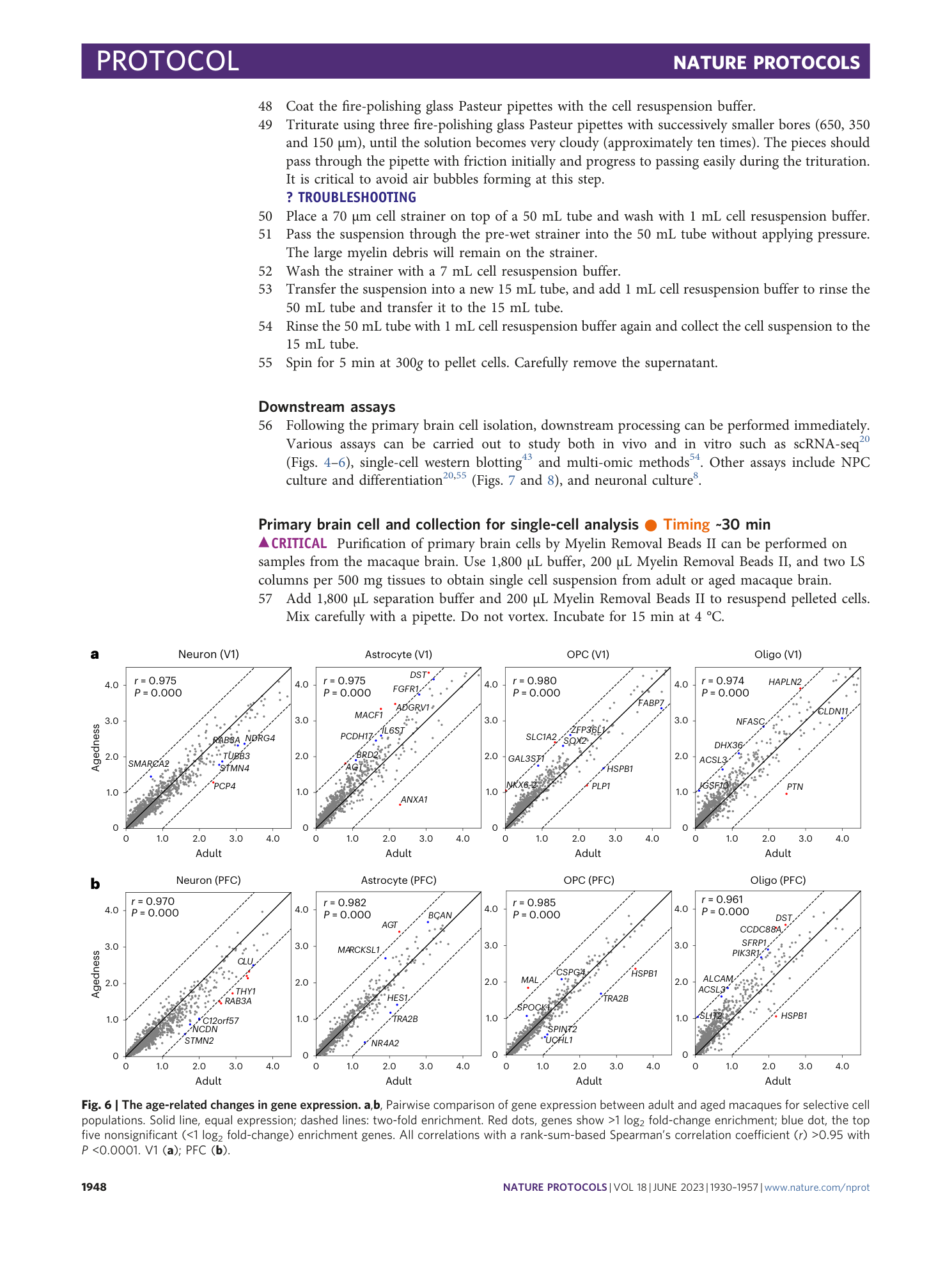
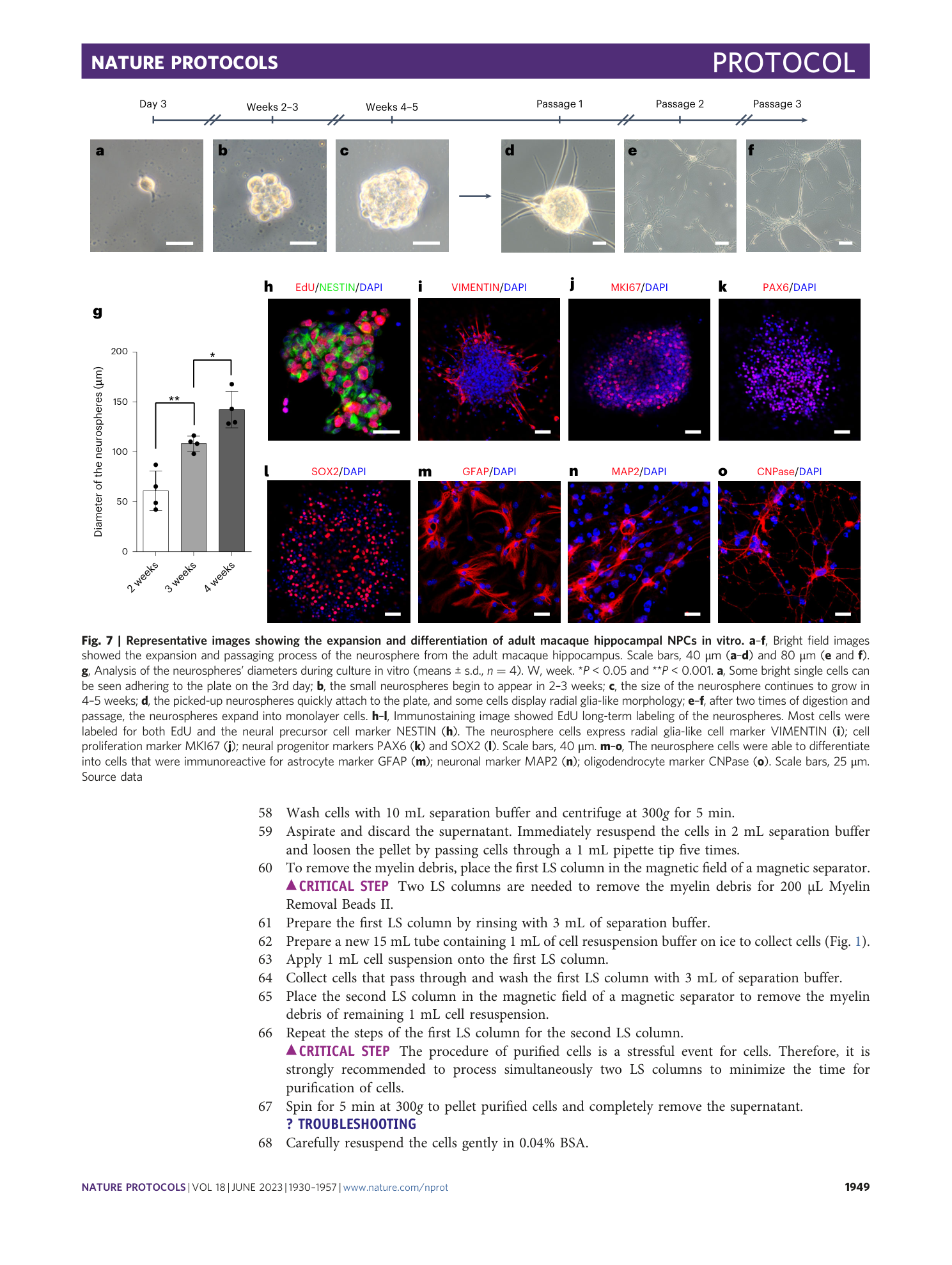
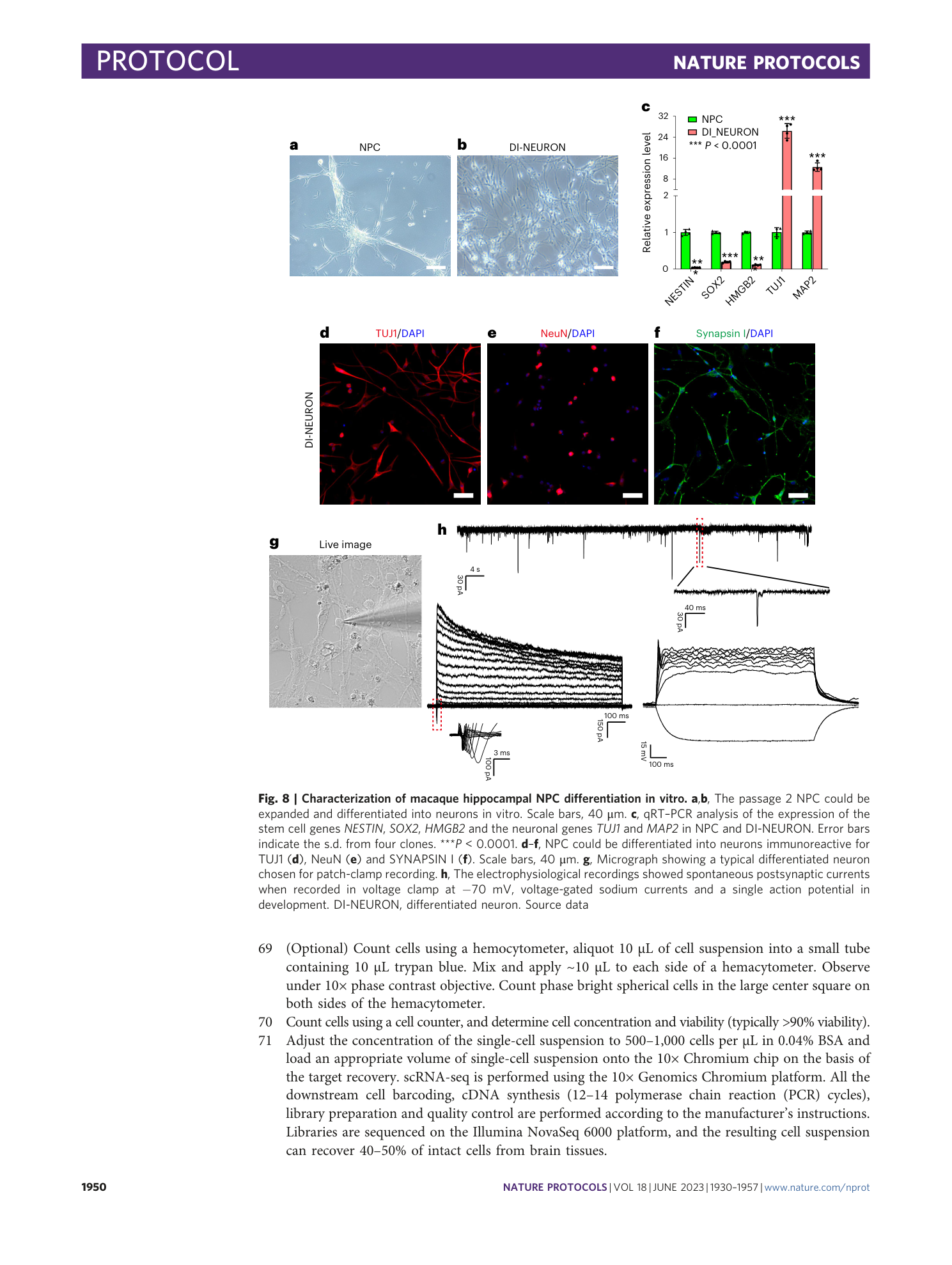
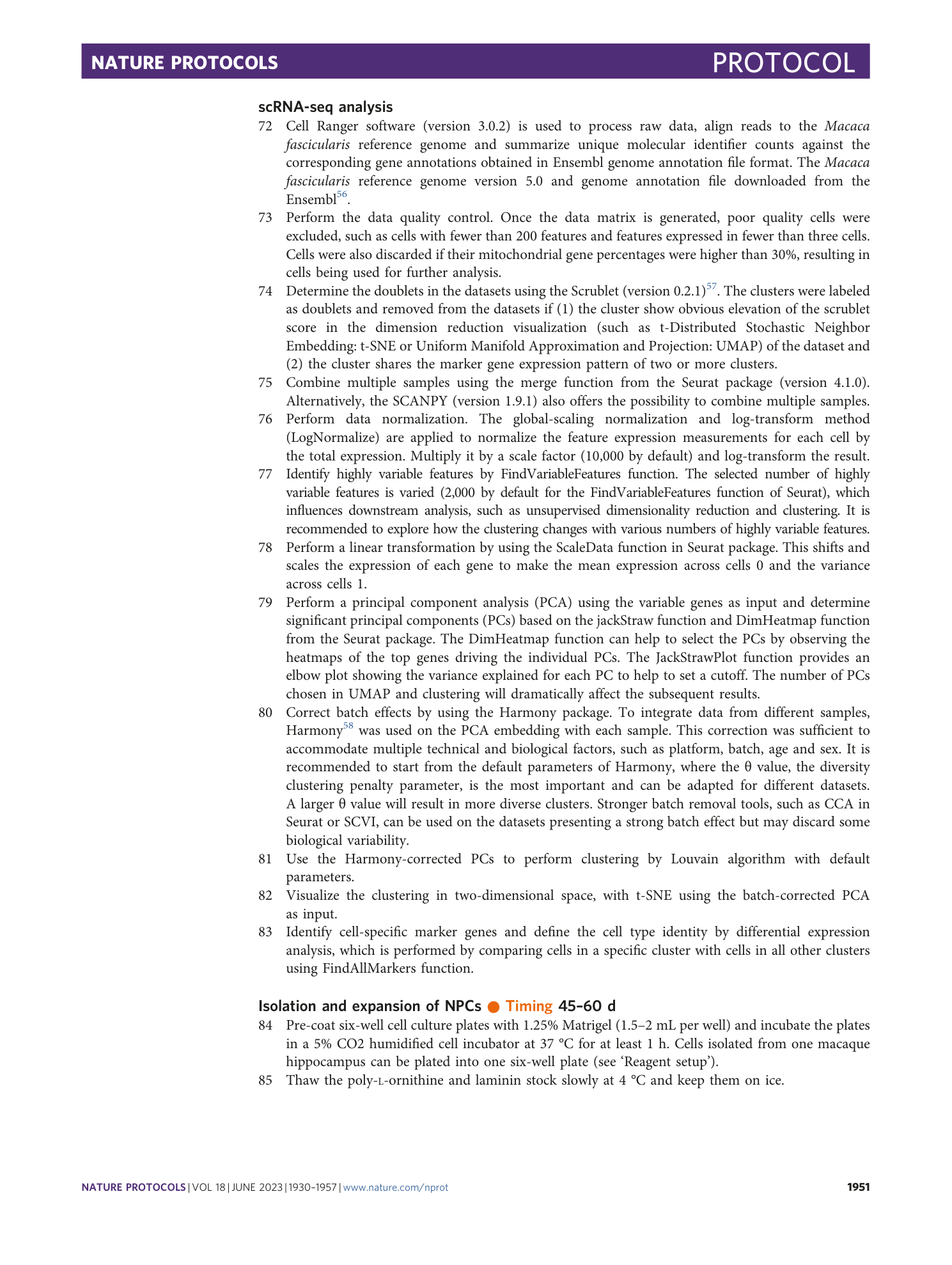
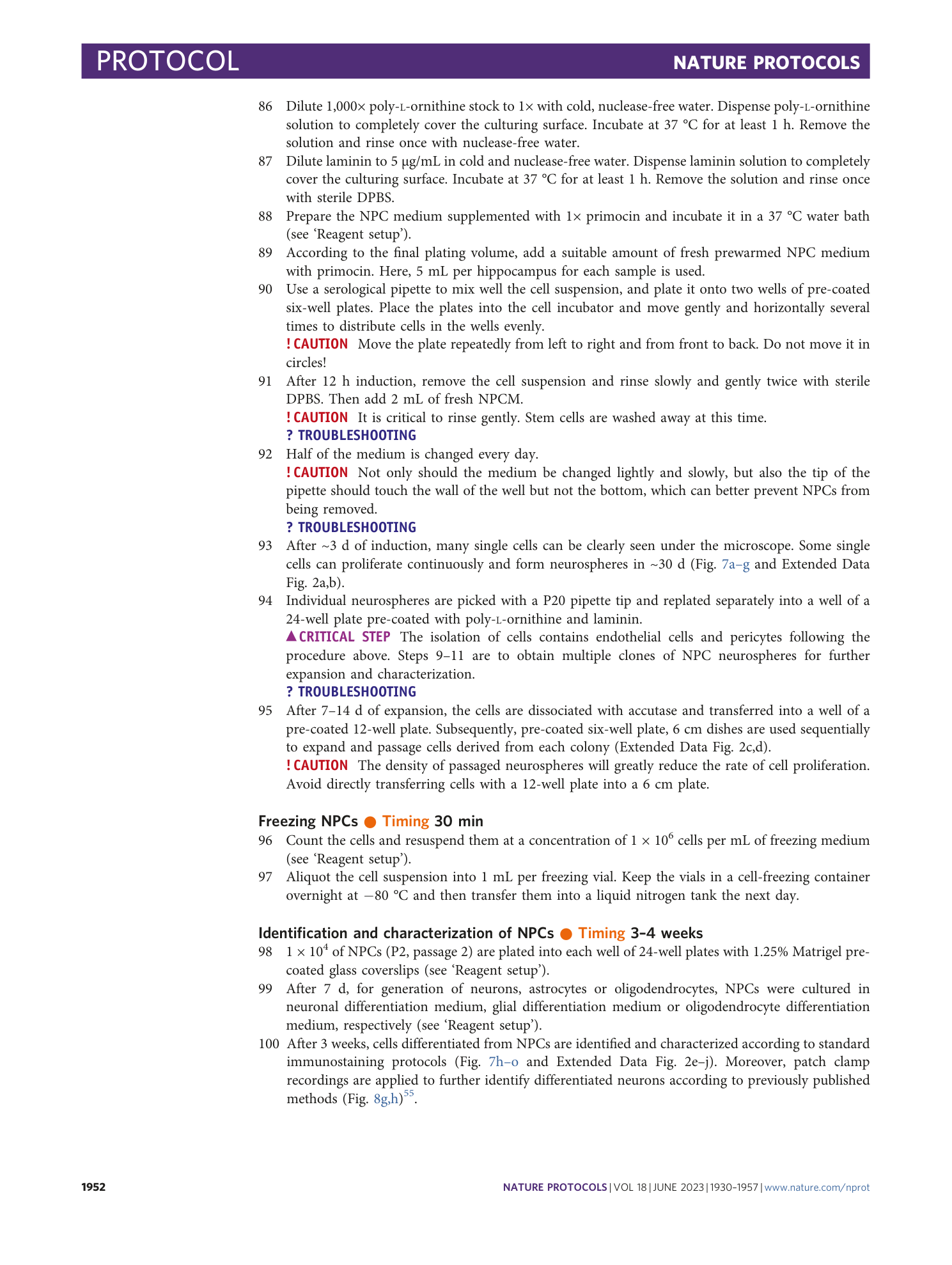
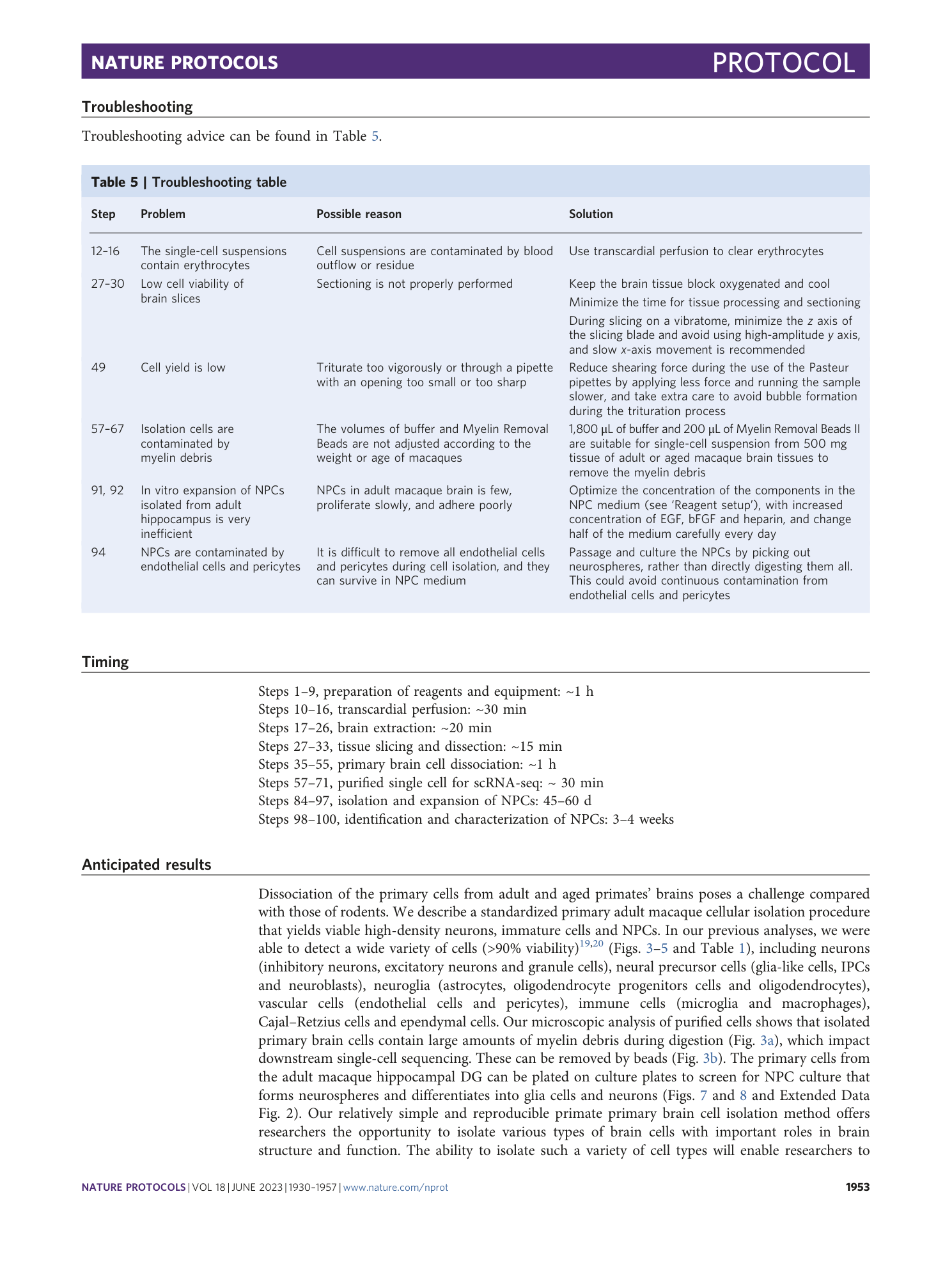
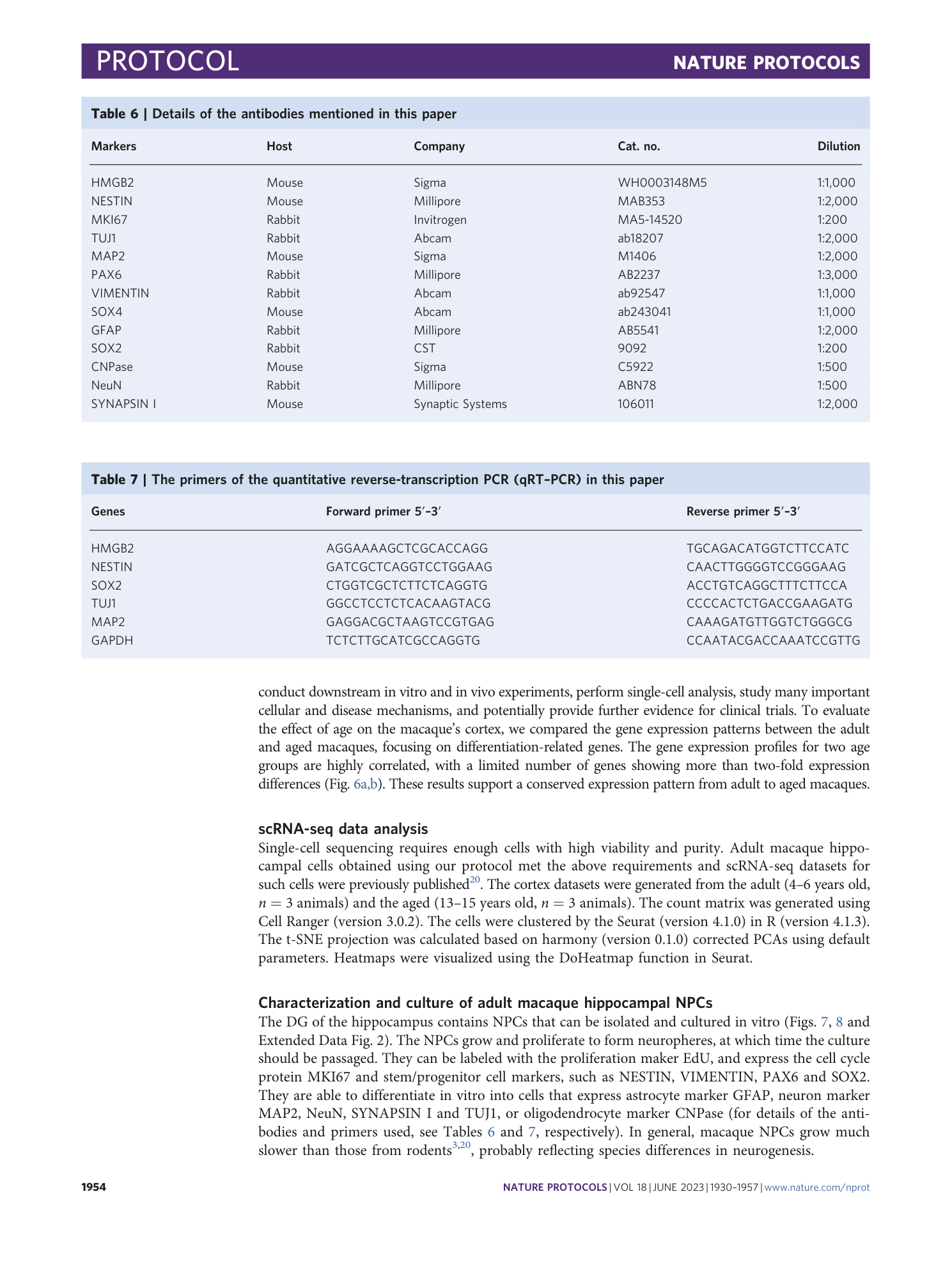
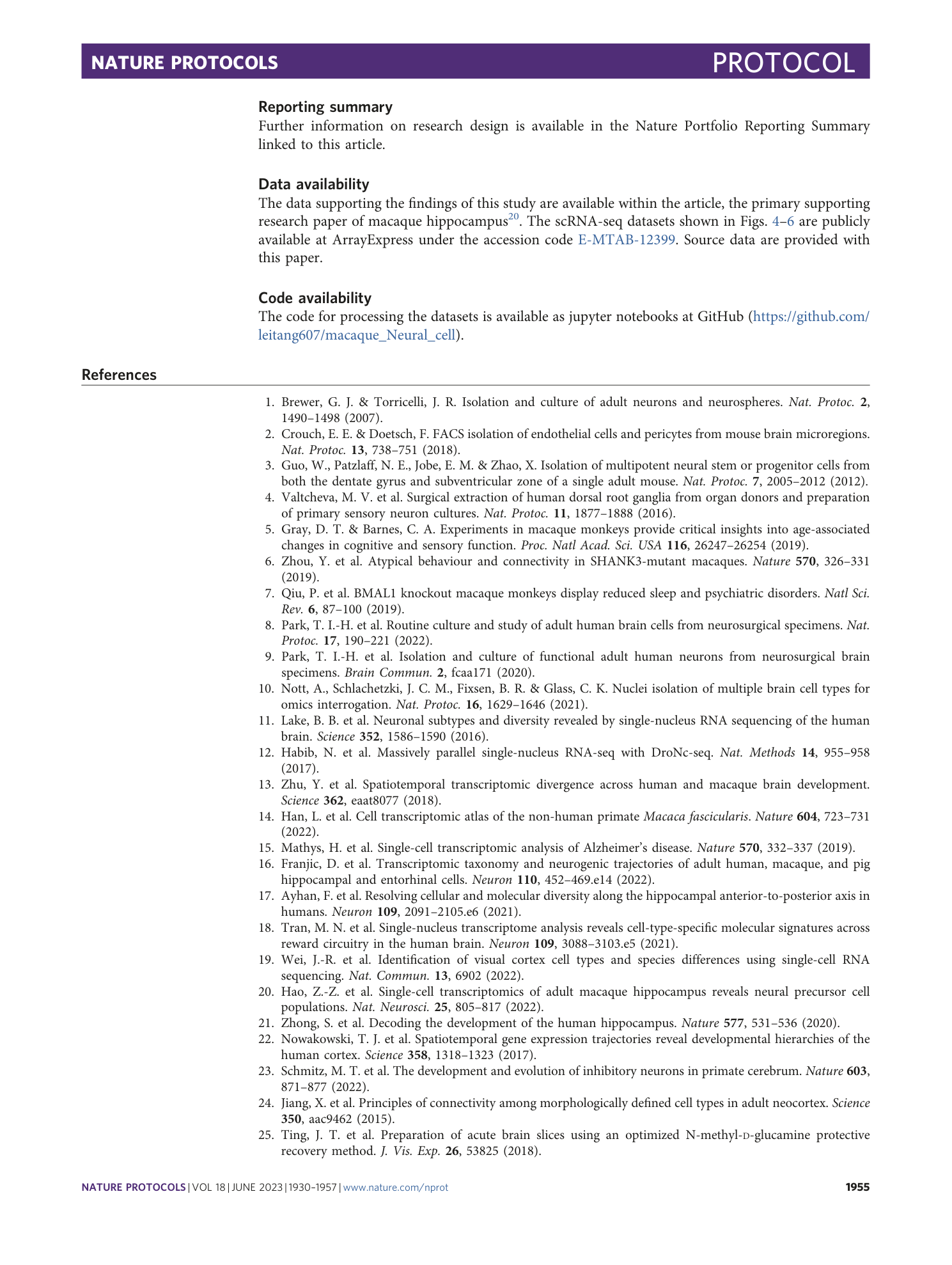
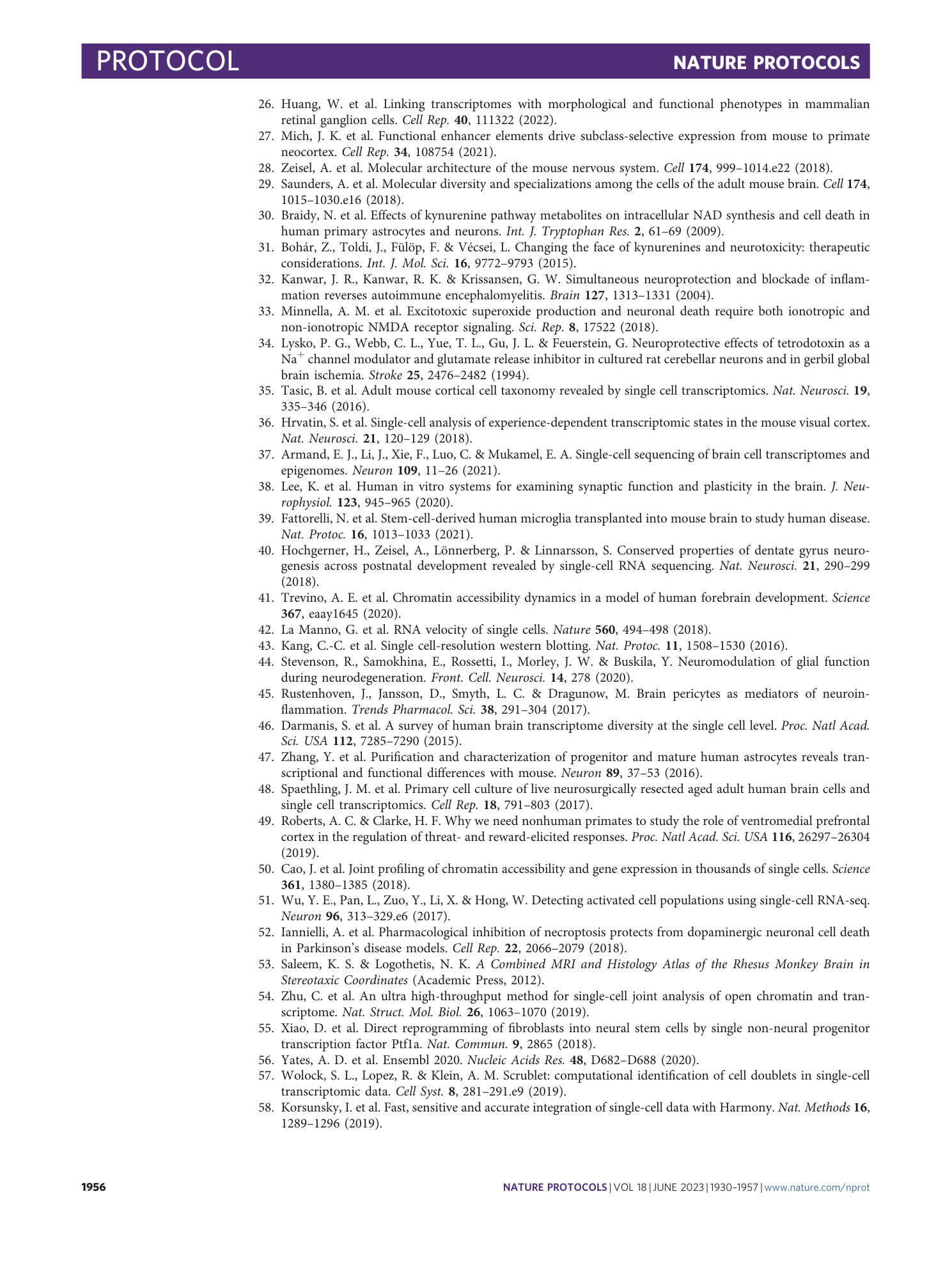
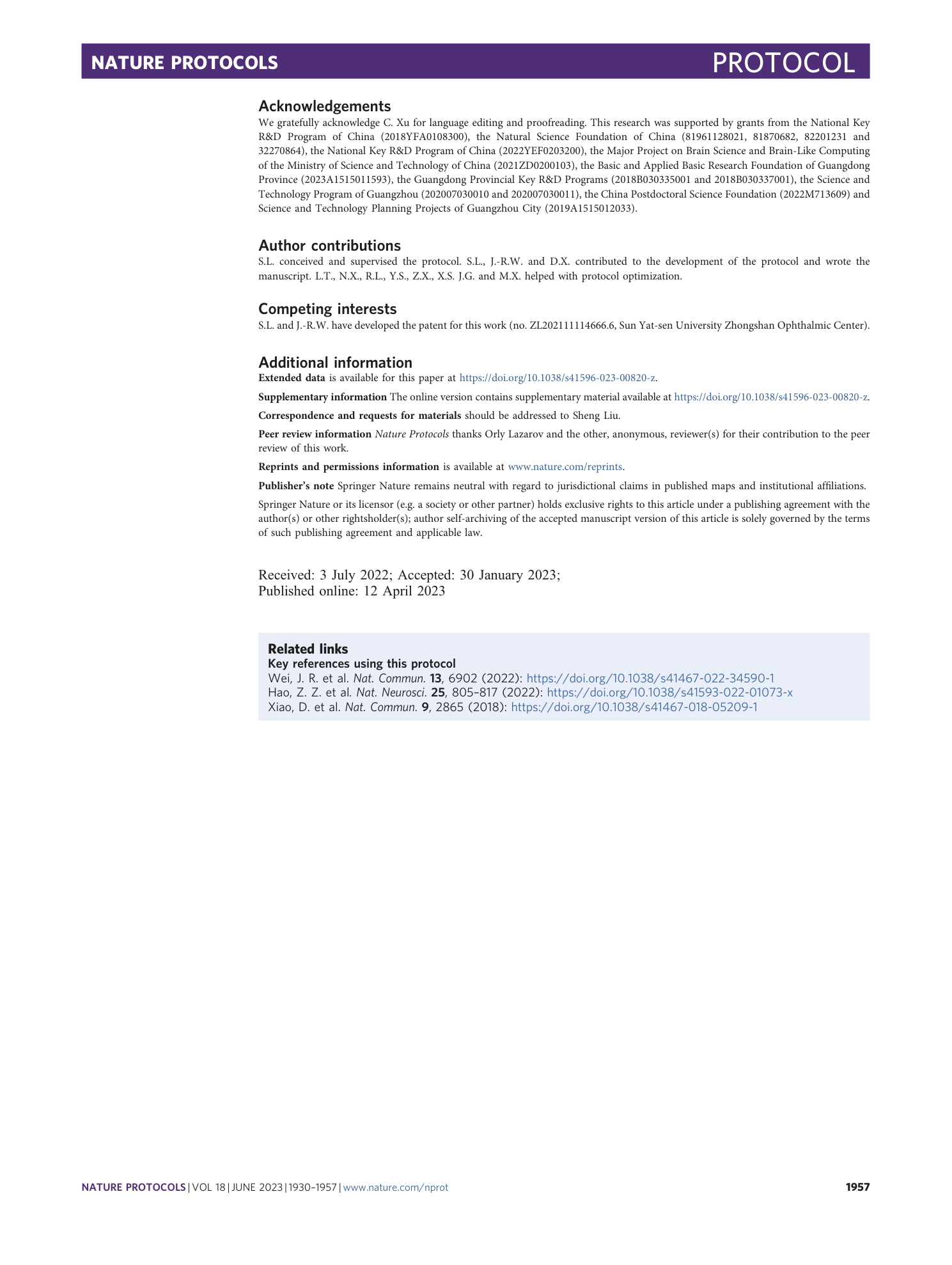
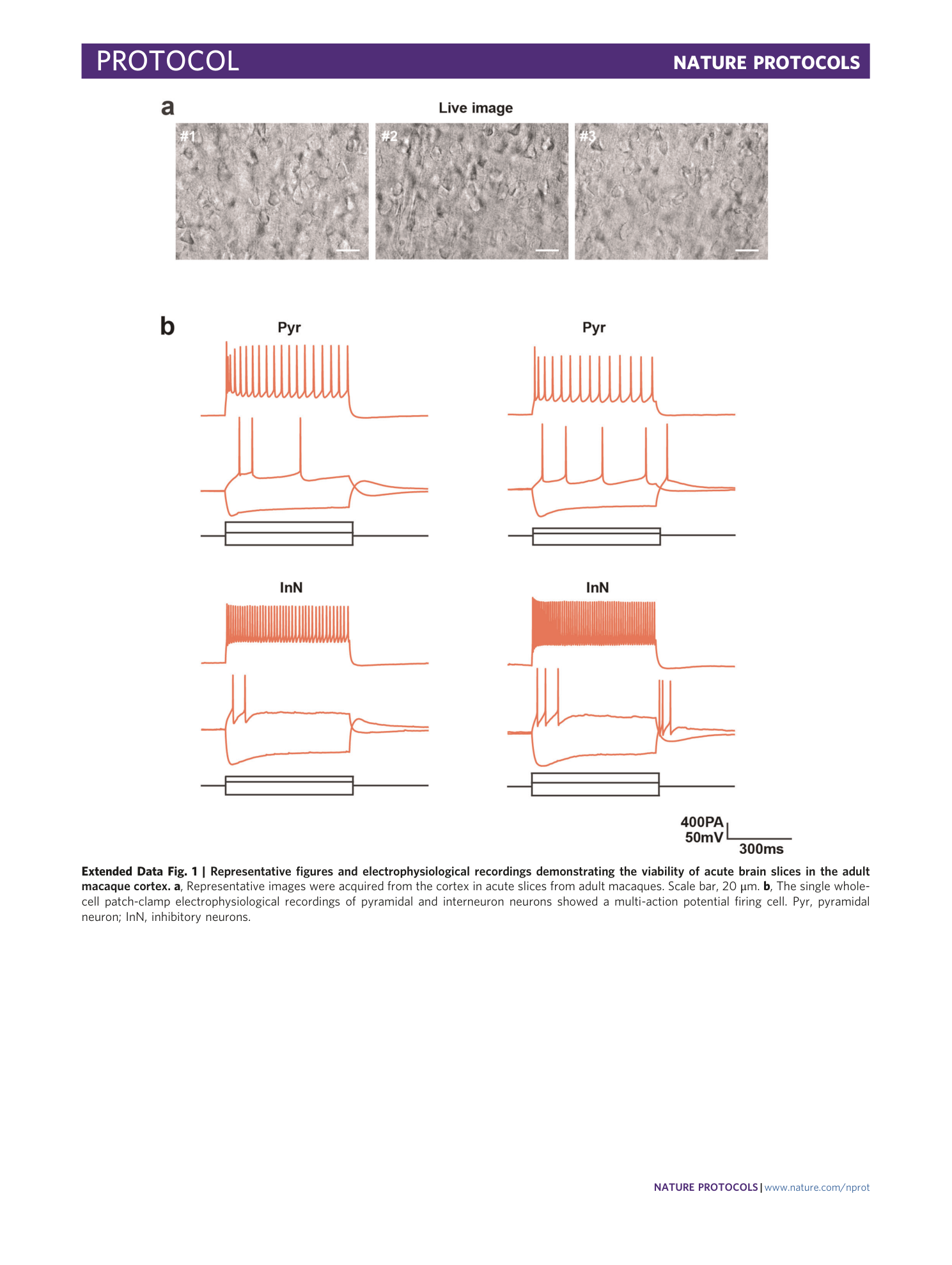

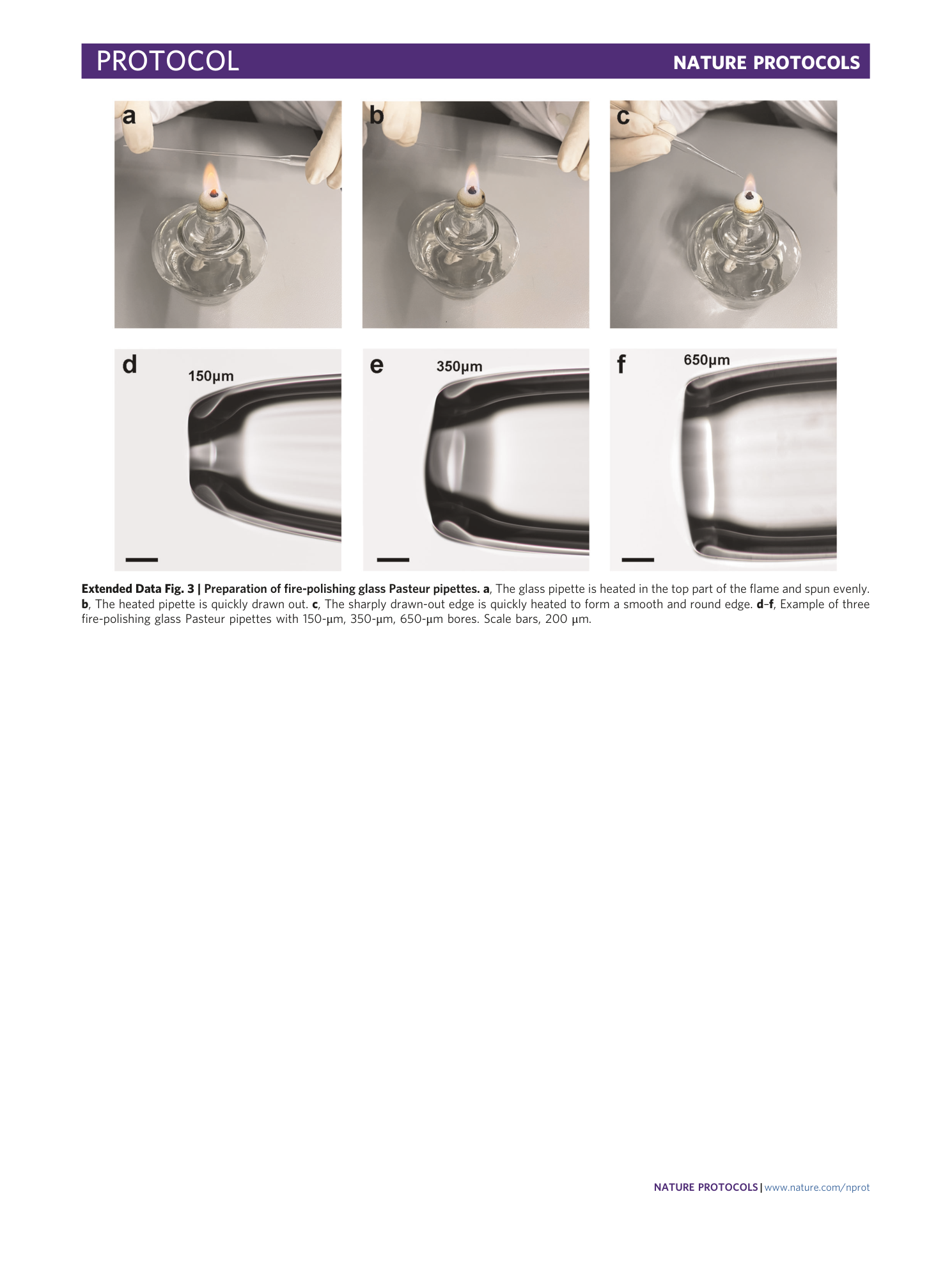
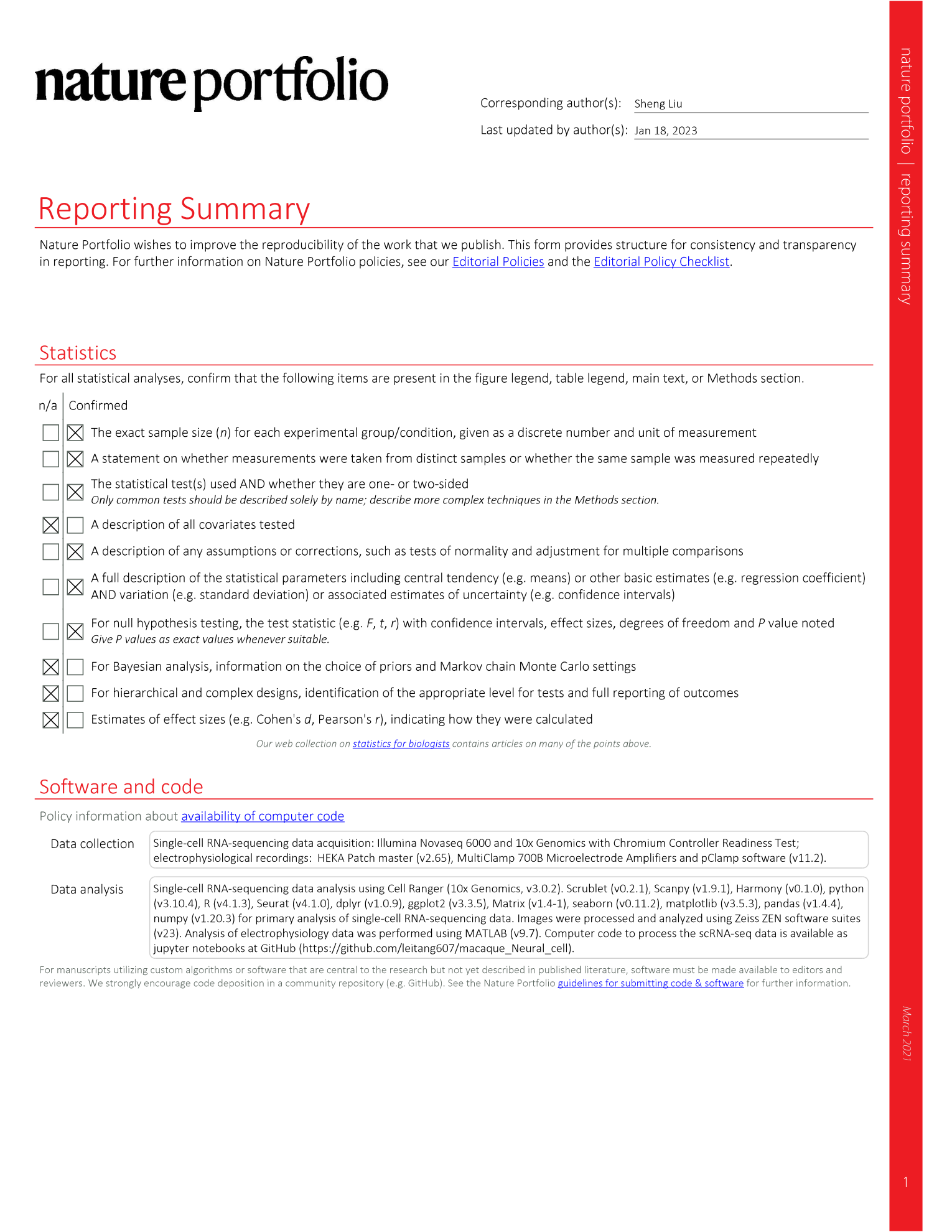
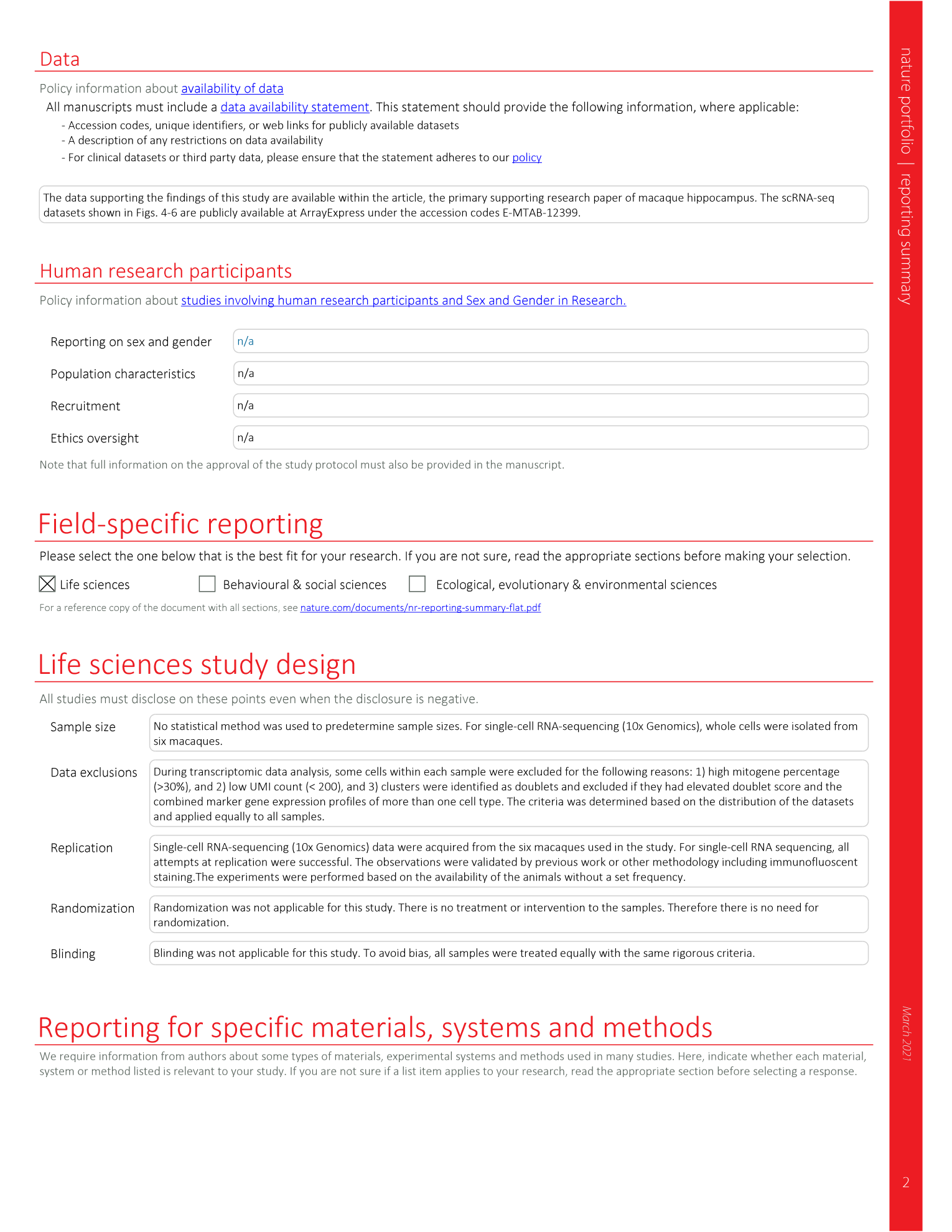
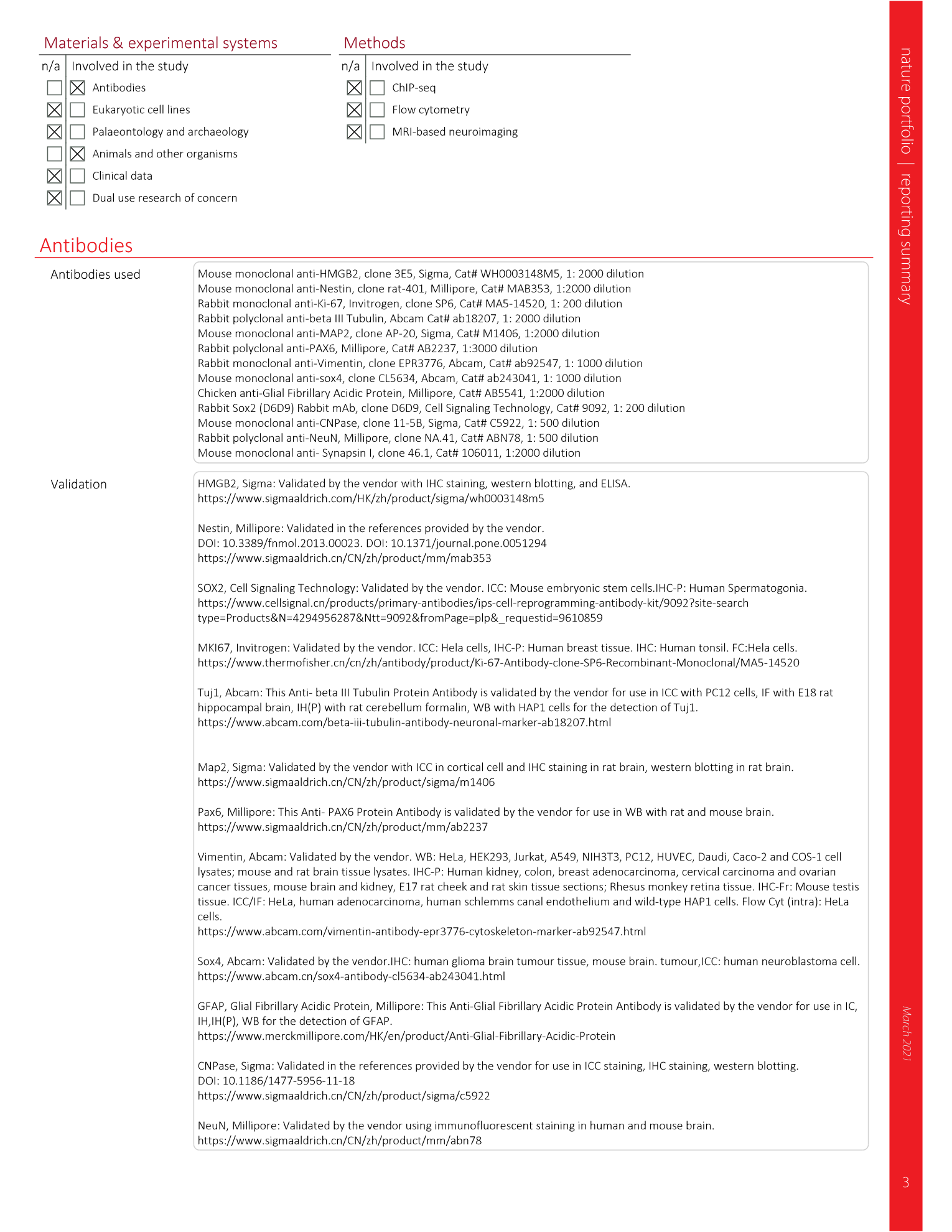
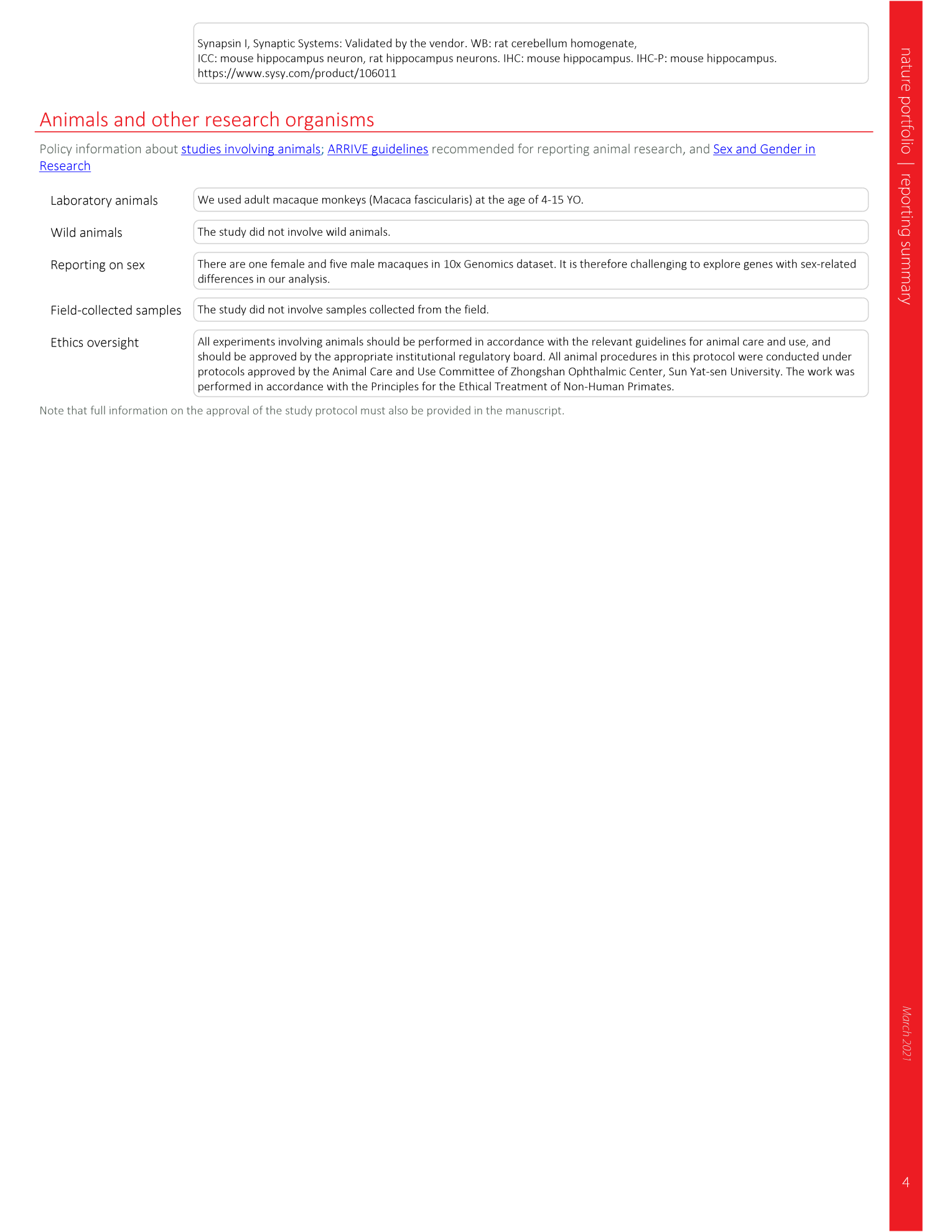
Extended
Extended Data Fig. 1 Representative figures and electrophysiological recordings demonstrating the viability of acute brain slices in the adult macaque cortex.
a , Representative images were acquired from the cortex in acute slices from adult macaques. Scale bar, 20 μm. b , The single whole-cell patch-clamp electrophysiological recordings of pyramidal and interneuron neurons showed a multi-action potential firing cell. Pyr, pyramidal neuron; InN, inhibitory neurons.
Extended Data Fig. 2 Primary culture of cells and labeling assessments from the hippocampus of adult macaque monkeys.
a , b , The neurospheres are formed from cells cultured from the hippocampus of adult macaque monkeys. Three weeks after cell seeding, NPCs elucidated spindle morphology in a. Thirty days after cell seeding in b. D, days. Scale bars, a, 40 μm; b, 160 μm. c , d , NPCs view in P1 and P4 passages; P, passages. Scale bars, c, 80 μm; d, 60 μm. e – j , Cultured NPCs form proliferating neurospheres positive for NESTIN, MKI67, PAX6, VIMENTIN, SOX4 and HMGB2. Scale bars, 40 μm.
Extended Data Fig. 3 Preparation of fire-polishing glass Pasteur pipettes.
a , The glass pipette is heated in the top part of the flame and spun evenly. b , The heated pipette is quickly drawn out. c , The sharply drawn-out edge is quickly heated to form a smooth and round edge. d – f , Example of three fire-polishing glass Pasteur pipettes with 150-μm, 350-μm, 650-μm bores. Scale bars, 200 μm.
Supplementary information
Reporting Summary
Supplementary Video 1
The morphologies of recorded neurons.
Supplementary Video 2
The morphologies of recorded neurons.

